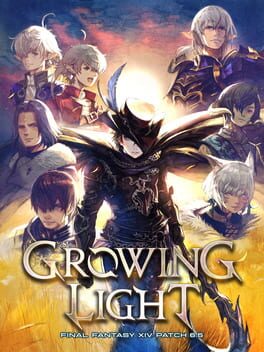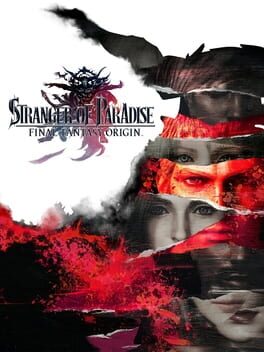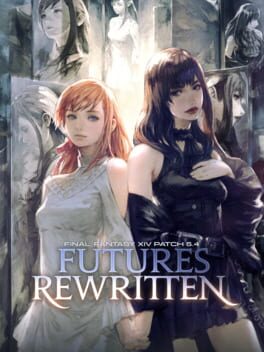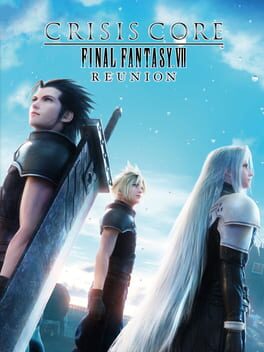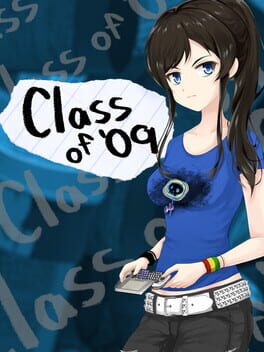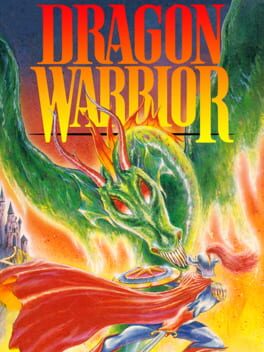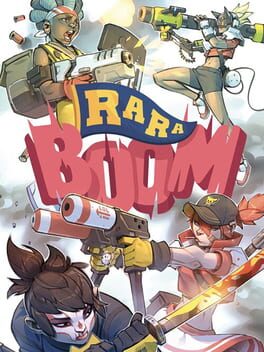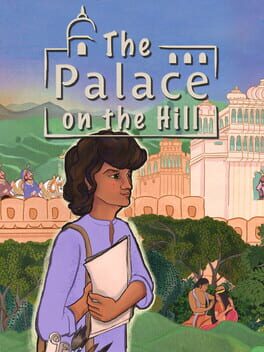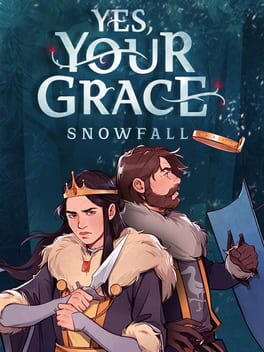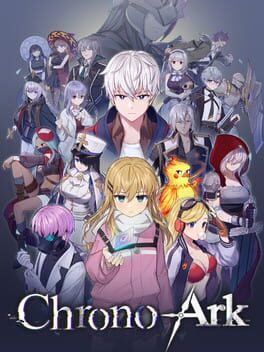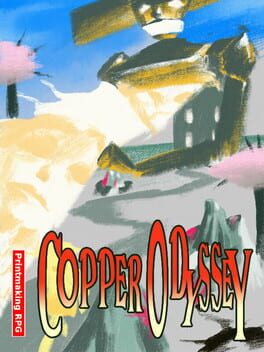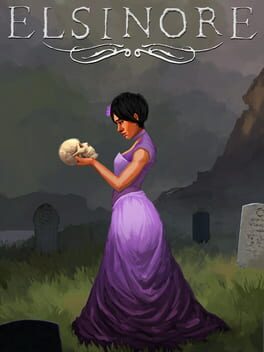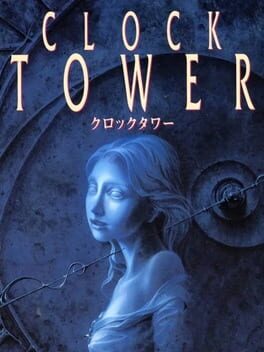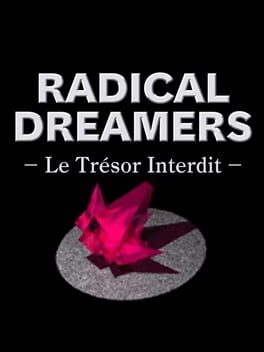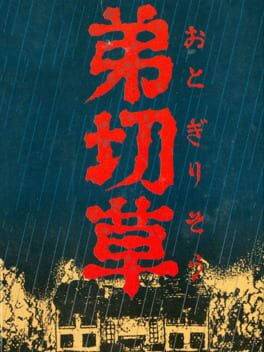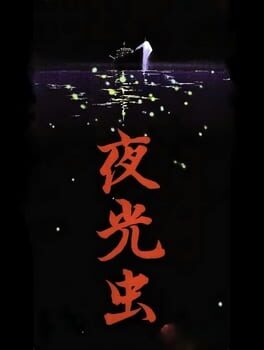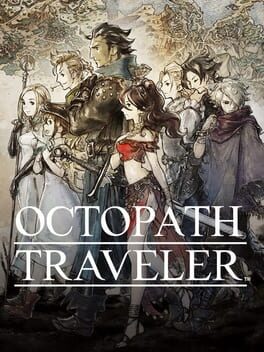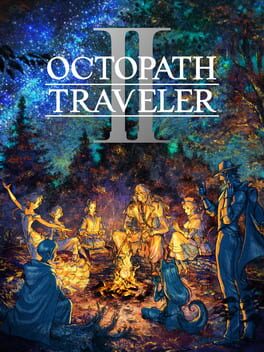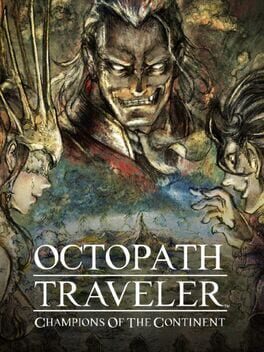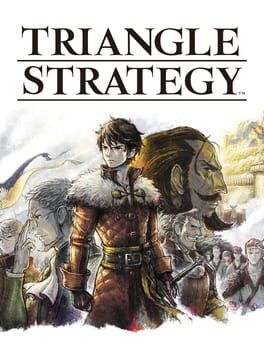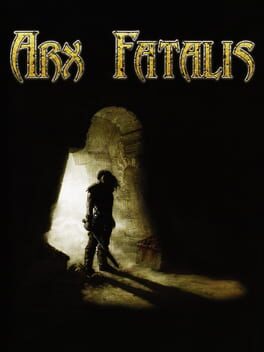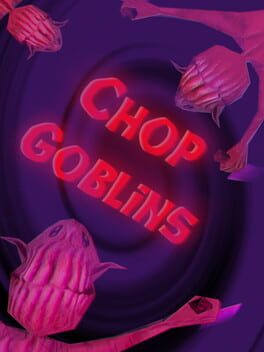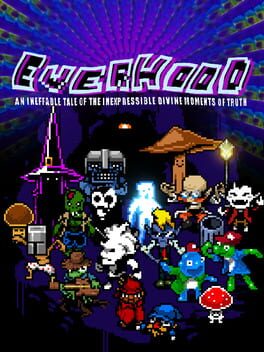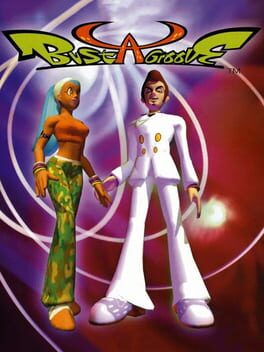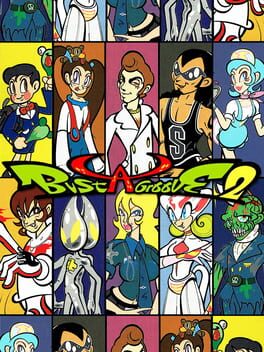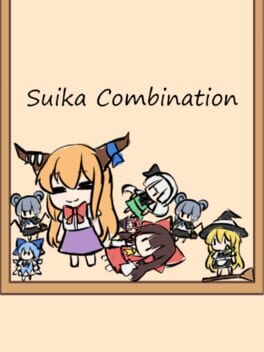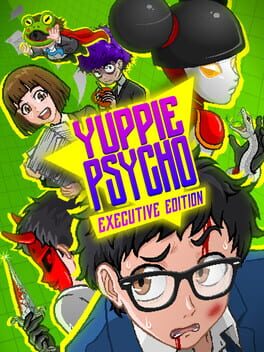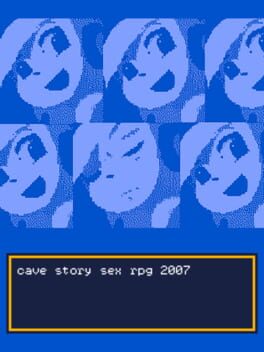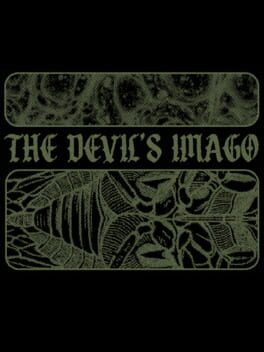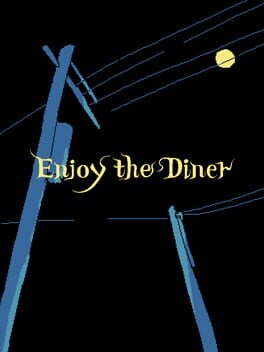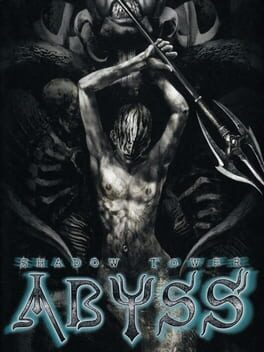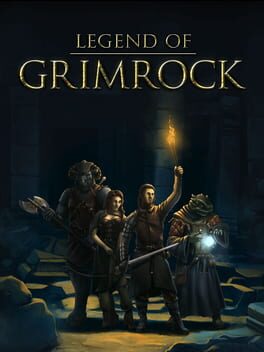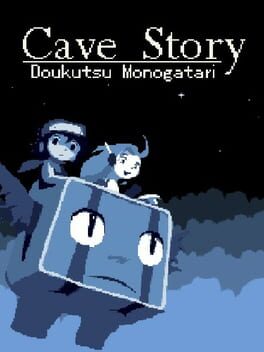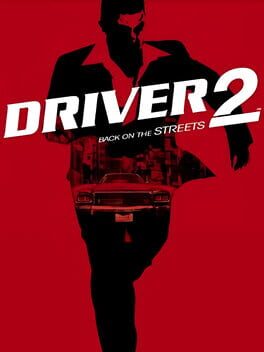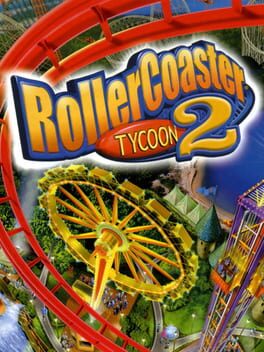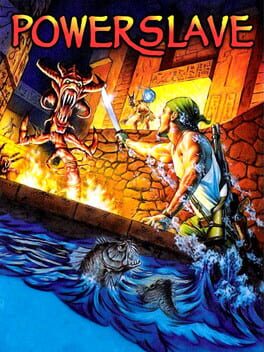Skylian
25 reviews liked by Skylian
Sonic Crackers
TBD
the golden age of final fantasy xiv is officially over.
it's one thing to have crappy writing (this happens a lot; ffxiv is more often one of the most mediocre final fantasies than it is one of the very best ones). it's another thing entirely to not only completely ruin the arc of one of the game's most promising characters but to completely neuter all the mystique, allure and intrigue to a part of the game's lore that has been built up over the past 10+ years of storytelling (while completely neglecting the characters originally entangled in said lore).
i could elucidate my feelings on what it's been like to follow the post-6.0 patch cycle but i think this image sums up capping things off with 6.5 more eloquently than i could ever hope to: https://i.imgur.com/uo6iffw.png
it's one thing to have crappy writing (this happens a lot; ffxiv is more often one of the most mediocre final fantasies than it is one of the very best ones). it's another thing entirely to not only completely ruin the arc of one of the game's most promising characters but to completely neuter all the mystique, allure and intrigue to a part of the game's lore that has been built up over the past 10+ years of storytelling (while completely neglecting the characters originally entangled in said lore).
i could elucidate my feelings on what it's been like to follow the post-6.0 patch cycle but i think this image sums up capping things off with 6.5 more eloquently than i could ever hope to: https://i.imgur.com/uo6iffw.png
If you only play Jack's game once, you know that it's a 7/10. If you play it twice, you know that it's one of the greatest character action games ever made.
I mostly play games to the credits, and then I stop. My reasoning for this is that if I see the credits of any given work, then the creator is signaling to me that the work is now over. It's a pretty good system, largely because creators seem to be on the same page as me; the most they'll usually include is something like a post-credits scene, or maybe a New Game Plus option if they're feeling especially daring. Stranger of Paradise offers a post-game with a decent wealth of side missions to take on, but I never felt any real need to dig into them. I saw credits, after all. The game was over, and everything after this was just a bonus for those who desperately needed more and didn't feel like starting a new run from scratch. I imagine that this is how most people experienced Stranger of Paradise, and I similarly imagine that this is why most people seem to agree that Stranger of Paradise is good. Not great, not awful, just good.
Stranger of Paradise doesn't do a good enough job at incentivizing you to use even a quarter of the tools you have available until the DLCs, which I think is a shame. You can easily cruise through the entire base game with any job on Hard by hitting the Optimize Equipment button every now and then. There's really very little that you need to do to roll credits. I suppose it's good for encouraging the player to learn their fundamentals — blocking, dodging, parrying, learning when it's safe to hit and when you need to back off — but I don't see much of a reason why they're given the entire length of the base game to do it. Stranger of Paradise certainly doesn't start when you get into the DLC, but it opens up so much when you do that you may as well be playing a completely different game.
Suddenly everything matters. Everything. Gear now requires you to balance affinities and blessings and attached skills rather than just picking whatever has the highest level appended to hit. The smithy becomes something that you actually use, forcing you to swap affinities and skills around while upgrading the gear that you've got to be better at everything it does. Figuring out a command ability rotation you can bust out during fights to keep your buffs going is critical. You get three Lightbringer forms instead of just one, and you need to be making regular use of them to beat the highest-tier enemies. Job levels get capped at 300 up from 30, and each level beyond 30 gives you a master point that you can allocate into extra stats to create a myriad of different builds even within the same job. The game stops playing fair, and it similarly demands that you stop playing fair. You will struggle, wonder how the fuck anyone is ever supposed to do whatever is walling you, figure out that the trick is based on some mechanic that you haven't been making use of until this point, develop an understanding of that mechanic, and then use it to win. You repeat this until Jack becomes an unstoppable beast and you break the balance in half over your knee, and the game immediately ends with a message of congratulations.
Stranger of Paradise might be the mechanically deepest character action game I've ever played, but it rolls out all of its mechanics masterfully over the course of the base game and its three DLCs. You never really stop learning until the end of the third expansion, but it never feels overwhelming. Struggling with the Dragon Trials? Learn how to balance affinities and allocate your job's side-upgrades. Struggling in the rift? Learn how to play around with the smithy's tools and identify relic gear. Struggling against the final boss of the rift? Learn how to use Dimension Bringer. Struggling in the final zone? Learn how to work blessings into your build. I didn't even know that you could parry until about fifteen hours in, but it eventually became the cornerstone of my entire final setup.
I said it earlier in my review for Sekiro, but you can boil most action games down to one of either slow or fast, and one of either simple or complex. Fast and simple is my least favorite combination. Fast and complex is my most. Stranger of Paradise is kind of fast and ridiculously complex, and is accordingly one of the best action games I've ever experienced. Rare is it to find a game that's as fun to play as it is to break. Your reward for struggling through the past thirty hours of the game is to attain borderline godhood just in time for it to end (provided that you didn't use Extra Mode to cheat your way through most of it), and it's a wonderful capstone to a delightful playthrough.
Of course, the gameplay is far from the only thing that managed to slip its hooks into me. The fact that I can describe the narrative as "a post-modern take on how nostalgia shapes our memories as viewed through the lens of Final Fantasy setpieces" and not be incorrect is ridiculous. This is the killing Chaos game! This is the bullshit game! This is the game where Jack turns on his iPod and plays nu-metal and then walks away! How the fuck is this serious? How can you describe it as anything other than blunted edge, more resembling Shadow the Hedgehog than Paradise Lost?
The key here is intention. Jack is a completely one-dimensional edgelord. However, he wasn't always that way; it's only by seeing everything through to the end that you get to see the full picture of who Jack really is — who he used to be, at least — before he gave himself completely over to his quest for revenge. There's something about your first playthrough that'll make you feel like the writing is bad, because it plays into a lot of very basic, newbie pitfalls; everyone always talks as if they know exactly what's going on, leaving the player feeling mostly bewildered at every development. Everyone seems to know something that you don't, which makes all of the characters have this sort-of alien quality to them that you often see in stories that are poorly-written. However, that's exactly the point. Everyone else in your party knows exactly what's going on, and, as the player avatar, he's about as confused about all of this shit as you are. It's only by the time the game ends that you're filled in on all of the details, and it largely feels like an asspull the first time you play it through. Go through the game a second time with the knowledge that you now have, and a lot of what seemed like bad writing from the outset reveals itself to be secretly masterful all along. You and Jack just didn't know it yet.
It's remarkable that Stranger of Paradise has as much to say as it does, while never managing to get in its own way. Many players will breeze through it, never engage with the deeper narrative hooks — why would they, right? — and walk away feeling as though they got a pretty decent experience. In a way, that's admirable. Stranger of Paradise doesn't grab you by the shoulders and scream in your face that you need to equip this job with this gearset for this boss to understand this plot thread to appreciate this bit of story. It gives you a lot of leniency to overlook all of that in a way that makes me feel bad for not playing closer attention to it on my first time through. I feel like I've failed Stranger of Paradise, in a way, and this is the best way for me to make things up to it.
If you've only played it once, I don't have strong enough words to beg you to play it a second time. Take what you know, everything you've learned your first time through, and bring it with you again. Re-enter the cycle, just as Jack has done hundreds of times over, and realize why the Lufenians felt it so important to make sure you don't get to keep your memories when you start over. It's because your knowledge will make you more powerful that anyone could have expected.
I don't give a fuck who you are.
I mostly play games to the credits, and then I stop. My reasoning for this is that if I see the credits of any given work, then the creator is signaling to me that the work is now over. It's a pretty good system, largely because creators seem to be on the same page as me; the most they'll usually include is something like a post-credits scene, or maybe a New Game Plus option if they're feeling especially daring. Stranger of Paradise offers a post-game with a decent wealth of side missions to take on, but I never felt any real need to dig into them. I saw credits, after all. The game was over, and everything after this was just a bonus for those who desperately needed more and didn't feel like starting a new run from scratch. I imagine that this is how most people experienced Stranger of Paradise, and I similarly imagine that this is why most people seem to agree that Stranger of Paradise is good. Not great, not awful, just good.
Stranger of Paradise doesn't do a good enough job at incentivizing you to use even a quarter of the tools you have available until the DLCs, which I think is a shame. You can easily cruise through the entire base game with any job on Hard by hitting the Optimize Equipment button every now and then. There's really very little that you need to do to roll credits. I suppose it's good for encouraging the player to learn their fundamentals — blocking, dodging, parrying, learning when it's safe to hit and when you need to back off — but I don't see much of a reason why they're given the entire length of the base game to do it. Stranger of Paradise certainly doesn't start when you get into the DLC, but it opens up so much when you do that you may as well be playing a completely different game.
Suddenly everything matters. Everything. Gear now requires you to balance affinities and blessings and attached skills rather than just picking whatever has the highest level appended to hit. The smithy becomes something that you actually use, forcing you to swap affinities and skills around while upgrading the gear that you've got to be better at everything it does. Figuring out a command ability rotation you can bust out during fights to keep your buffs going is critical. You get three Lightbringer forms instead of just one, and you need to be making regular use of them to beat the highest-tier enemies. Job levels get capped at 300 up from 30, and each level beyond 30 gives you a master point that you can allocate into extra stats to create a myriad of different builds even within the same job. The game stops playing fair, and it similarly demands that you stop playing fair. You will struggle, wonder how the fuck anyone is ever supposed to do whatever is walling you, figure out that the trick is based on some mechanic that you haven't been making use of until this point, develop an understanding of that mechanic, and then use it to win. You repeat this until Jack becomes an unstoppable beast and you break the balance in half over your knee, and the game immediately ends with a message of congratulations.
Stranger of Paradise might be the mechanically deepest character action game I've ever played, but it rolls out all of its mechanics masterfully over the course of the base game and its three DLCs. You never really stop learning until the end of the third expansion, but it never feels overwhelming. Struggling with the Dragon Trials? Learn how to balance affinities and allocate your job's side-upgrades. Struggling in the rift? Learn how to play around with the smithy's tools and identify relic gear. Struggling against the final boss of the rift? Learn how to use Dimension Bringer. Struggling in the final zone? Learn how to work blessings into your build. I didn't even know that you could parry until about fifteen hours in, but it eventually became the cornerstone of my entire final setup.
I said it earlier in my review for Sekiro, but you can boil most action games down to one of either slow or fast, and one of either simple or complex. Fast and simple is my least favorite combination. Fast and complex is my most. Stranger of Paradise is kind of fast and ridiculously complex, and is accordingly one of the best action games I've ever experienced. Rare is it to find a game that's as fun to play as it is to break. Your reward for struggling through the past thirty hours of the game is to attain borderline godhood just in time for it to end (provided that you didn't use Extra Mode to cheat your way through most of it), and it's a wonderful capstone to a delightful playthrough.
Of course, the gameplay is far from the only thing that managed to slip its hooks into me. The fact that I can describe the narrative as "a post-modern take on how nostalgia shapes our memories as viewed through the lens of Final Fantasy setpieces" and not be incorrect is ridiculous. This is the killing Chaos game! This is the bullshit game! This is the game where Jack turns on his iPod and plays nu-metal and then walks away! How the fuck is this serious? How can you describe it as anything other than blunted edge, more resembling Shadow the Hedgehog than Paradise Lost?
The key here is intention. Jack is a completely one-dimensional edgelord. However, he wasn't always that way; it's only by seeing everything through to the end that you get to see the full picture of who Jack really is — who he used to be, at least — before he gave himself completely over to his quest for revenge. There's something about your first playthrough that'll make you feel like the writing is bad, because it plays into a lot of very basic, newbie pitfalls; everyone always talks as if they know exactly what's going on, leaving the player feeling mostly bewildered at every development. Everyone seems to know something that you don't, which makes all of the characters have this sort-of alien quality to them that you often see in stories that are poorly-written. However, that's exactly the point. Everyone else in your party knows exactly what's going on, and, as the player avatar, he's about as confused about all of this shit as you are. It's only by the time the game ends that you're filled in on all of the details, and it largely feels like an asspull the first time you play it through. Go through the game a second time with the knowledge that you now have, and a lot of what seemed like bad writing from the outset reveals itself to be secretly masterful all along. You and Jack just didn't know it yet.
It's remarkable that Stranger of Paradise has as much to say as it does, while never managing to get in its own way. Many players will breeze through it, never engage with the deeper narrative hooks — why would they, right? — and walk away feeling as though they got a pretty decent experience. In a way, that's admirable. Stranger of Paradise doesn't grab you by the shoulders and scream in your face that you need to equip this job with this gearset for this boss to understand this plot thread to appreciate this bit of story. It gives you a lot of leniency to overlook all of that in a way that makes me feel bad for not playing closer attention to it on my first time through. I feel like I've failed Stranger of Paradise, in a way, and this is the best way for me to make things up to it.
If you've only played it once, I don't have strong enough words to beg you to play it a second time. Take what you know, everything you've learned your first time through, and bring it with you again. Re-enter the cycle, just as Jack has done hundreds of times over, and realize why the Lufenians felt it so important to make sure you don't get to keep your memories when you start over. It's because your knowledge will make you more powerful that anyone could have expected.
I don't give a fuck who you are.
Metroid Dread
2021
This review contains spoilers
PREVIOUSLY ON METROID: Samus Aran, bonded with Metroid DNA in order to save her life from the X, a world-eating parasite she unwittingly allowed to flourish by genociding the Metroids of SR388, becomes a new type of life-form, a hybrid of Humanity, Chozo, Metroid and X with no name other than "Samus Aran", and destroys a plot by The Federation to manufacture copies of the most dangerous predators in the galaxy: first Metroids, then Samus Aran.
So, how does Metroid: Dread progress this story, after nearly two decades between installments? What are the big ideas and concepts that Sakamoto claimed simply could not have been accomplished until the power of the Nintendo Switch arrived? And how will Dread re-restablish Metroid's position as the queen of this genre in a world full of games like Hollow Knight?
The answer to all of these questions is more or less a shrug. Metroid Dread is a fine game, one that is extremely engaging and compelling in the moment to moment, with smooth movement, pitch-perfect feedback, and some wonderfully exhilarating moments, but it isn't so much an evolution of the Metroid framework as it is a Greatest Hits collection of some of the series most compelling ideas, but if there's anything on here that was simply impossible to create on, say, the Wii U I can't find it, and the story mostly serves to repeat Fusion's ideas far less subtly and far less competently, a narrative that fails to convince me that Nintendo has any ideas of how to follow on from the knockout ideas presented in Fusion and, to a lesser extent, Dread.
The most baffling thing about this game is The Twist. Namely, that it's presented as one at all. Why is Samus "being a Metroid" (great writing on that one by the way, gang. What, was "no samus, you are the metroids AND THEN SAMUS WAS A METROID" too good for you?) supposed to be a shock? We knew this. We knew this from the start of Fusion. Its implications were fully crystallized when you escaped the secret lab near the end of that game through a shaft full of Metroids who regarded you as one of their own. Don't get me wrong, I like this story idea and I liked it when it was in Fusion, but it's bizarre to reach the reveal the story has been building towards and have it be something I fundamentally already know, like if Return of the Jedi decided to reveal that Darth Vader was Luke's father...again.
Speaking of which, Raven Beak is a cartoonishly uninteresting antagonist, but the scene where Samus does embrace the Metroid part of her to destroy the origin of the Chozo part of her is a genuinely sick as hell beat that would have really hit if this game was about the Chozo or bothered to interrogate them in any way, but instead Raven Beak is just an Evil Guy who Must Be Stopped, functionally interchangeable with the faceless arm of the Federation Military that served as Fusion's unseen true antagonist. And it ultimately just leads into another sequence referencing a past Metroid game.
There's cool stuff here, but it's all stuff I liked better when it was in the other games, routinely done better in those games. I'm very surprised that this game has received little to none of Fusion's criticism of extended dialogue sequences because they feel much more frictional here, particularly a 5-minute long exposition dump around the midpoint where some guy just drones the entire plot at you, rather than having it unfold and develop over the course of the game. The twist regarding who's on the intercom is basically the same as the twist with the computer in Fusion except less interesting, the X being released from containment lacks the weight of the same beat from Fusion...Dread feels like a holding pattern, Metroid spinning its wheels as it aimlessly wanders in search of a direction.
Speaking of aimlessness, one of the feelings that really struck me playing Dread was how aimless progression in it feeling despite being extremely linear in practice. I won't go over again how purposeful and effective Fusion's linearity was narratively, but I will mention that despite the linearity, Fusion was still able to establish the station as a meaningfully interconnected and intersecting space in a way that Dread is painfully unable to. There's no sense of cohesion or distinctiveness to the myriad environs of ZDR, they all look so similar (barring the forest level) and you zip and back forth between them with such reckless abandon that I never got any sense of them as meaningful distinct spaces, never mind a full cohesive world that I could understand in my head. When I got to the end of the game and could start the scavenger hunt, I didn't. How could I? I remembered rooms with stuff that I could explore and collect now, but I had no idea where it all actually was because I had no sense of what ZDR actually looked like. It's clear that this kind of progression is just MercurySteam's style: it's present in both the absolutely abysmal Mirror of Fate and the mediocre Samus Returns, and I just don't like it. Even if it's just a Generic Desert Level, a Generic Fire Level, I want my environments in a Metroidvania to feel meaningfully distinct, rather than an identikit techbase smear.
What makes this especially egregious is the EMMI areas, which are literally identical visually no matter what area of the game you're in. I have no idea why this decision was made: there are already so many indicators of when an EMMI is nearby, why do we need to make the environment conform to them as well? I never felt hunted by the EMMI, never (ahem) dreaded them, because very quickly I understood them to be essentially a minigame, divorced from the wider gameplay and narrative experience.
It's a fun minigame, at least. Chases are genuinely exhilirating and tense thanks to how genuinely difficult it is to nail the precise timing for the QTE, thought the incredibly generous checkpointing does rob them of their bite eventually. Narratively they're a total dud and they don't really work within the macrostructure of the game, but they are at least quite a bit of fun in isolation.
That's kinda Dread in a nutshell, honestly. I've been very negative thus far but it's still getting three stars for a reason, and that reason is that moment to moment this is just an incredibly playable game, and I mean that as a compliment. Samus controls great, the stiffness that made free-aiming and counters awkward fits in Samus Returns have been smoothed over to create an experience that excels in forward momentum, constantly moving and shooting and sliding in a way that tickles my neurons in the way that pulling off a string of Prince of Persia platforming does, a natural flow of movement and combat that just feels great in the moment. I may strongly dislike the way MercurySteam constructs their worlds, but by this point their designers have become incredibly adept at individual encounters and rooms. A particular highlight is just how puzzle-y much of the item collection is: requiring genuinely tricky and thoughtful application of your moves above and beyond any other game in the series bar sequence-breaks in Super Metroid. Dread has the absolute least "shoot every wall to try to find the one box that has an item" of any Metroid game, and this, along with the routinely excellent bosses (obscene reuse of the X-infected Chozo Warrior in the final stretch aside, I swear you fight this guy like four times in the space of an hour) mean that this game has some of the best individual bits in the entire series, even if it never coheres into a knockout whole.
Which makes me wonder if this game would not have been better off if it wasn't a Metroid game. Would this combat and movement have been more fun in a more linear game, where the environments could be sculpted to provide constant specific challenges perfectly attuned to the moveset you have right now? Would this game be able to be bolder with its storytelling if it wasn't tied to this specific franchise? I don't know. What I do know is that Metroid Dread, as it is now, does not feel like a franchise comeback as much as it does an overly cautious, conservative game that ultimately functions as an argument for the series' irrelevance, its inability to move forward and compete with its contemporaries. Neither MercurySteam nor Sakamoto seem to have any ideas on how to move this series forward, and given MercurySteam's well-documented unethical working practices I'm not particularly enthusiastic about the prospect of them being given yet another turn at the bat. Even Samus' Metroid Metamorphosis, the most evocative, exciting, and cool thing in the game, even if it is largely an element from Fusion's story writ louder, is walked back at the end with another recycled plot point from Fusion, the X reuniting with Samus. The game ends on business-as-usual, Samus blowing up a planet and flying away in her Iconic Purple Gravity suit, an echo of past glories growing more and more faded and distant as the years go on.
She doesn't even save anyone this time.
So, how does Metroid: Dread progress this story, after nearly two decades between installments? What are the big ideas and concepts that Sakamoto claimed simply could not have been accomplished until the power of the Nintendo Switch arrived? And how will Dread re-restablish Metroid's position as the queen of this genre in a world full of games like Hollow Knight?
The answer to all of these questions is more or less a shrug. Metroid Dread is a fine game, one that is extremely engaging and compelling in the moment to moment, with smooth movement, pitch-perfect feedback, and some wonderfully exhilarating moments, but it isn't so much an evolution of the Metroid framework as it is a Greatest Hits collection of some of the series most compelling ideas, but if there's anything on here that was simply impossible to create on, say, the Wii U I can't find it, and the story mostly serves to repeat Fusion's ideas far less subtly and far less competently, a narrative that fails to convince me that Nintendo has any ideas of how to follow on from the knockout ideas presented in Fusion and, to a lesser extent, Dread.
The most baffling thing about this game is The Twist. Namely, that it's presented as one at all. Why is Samus "being a Metroid" (great writing on that one by the way, gang. What, was "no samus, you are the metroids AND THEN SAMUS WAS A METROID" too good for you?) supposed to be a shock? We knew this. We knew this from the start of Fusion. Its implications were fully crystallized when you escaped the secret lab near the end of that game through a shaft full of Metroids who regarded you as one of their own. Don't get me wrong, I like this story idea and I liked it when it was in Fusion, but it's bizarre to reach the reveal the story has been building towards and have it be something I fundamentally already know, like if Return of the Jedi decided to reveal that Darth Vader was Luke's father...again.
Speaking of which, Raven Beak is a cartoonishly uninteresting antagonist, but the scene where Samus does embrace the Metroid part of her to destroy the origin of the Chozo part of her is a genuinely sick as hell beat that would have really hit if this game was about the Chozo or bothered to interrogate them in any way, but instead Raven Beak is just an Evil Guy who Must Be Stopped, functionally interchangeable with the faceless arm of the Federation Military that served as Fusion's unseen true antagonist. And it ultimately just leads into another sequence referencing a past Metroid game.
There's cool stuff here, but it's all stuff I liked better when it was in the other games, routinely done better in those games. I'm very surprised that this game has received little to none of Fusion's criticism of extended dialogue sequences because they feel much more frictional here, particularly a 5-minute long exposition dump around the midpoint where some guy just drones the entire plot at you, rather than having it unfold and develop over the course of the game. The twist regarding who's on the intercom is basically the same as the twist with the computer in Fusion except less interesting, the X being released from containment lacks the weight of the same beat from Fusion...Dread feels like a holding pattern, Metroid spinning its wheels as it aimlessly wanders in search of a direction.
Speaking of aimlessness, one of the feelings that really struck me playing Dread was how aimless progression in it feeling despite being extremely linear in practice. I won't go over again how purposeful and effective Fusion's linearity was narratively, but I will mention that despite the linearity, Fusion was still able to establish the station as a meaningfully interconnected and intersecting space in a way that Dread is painfully unable to. There's no sense of cohesion or distinctiveness to the myriad environs of ZDR, they all look so similar (barring the forest level) and you zip and back forth between them with such reckless abandon that I never got any sense of them as meaningful distinct spaces, never mind a full cohesive world that I could understand in my head. When I got to the end of the game and could start the scavenger hunt, I didn't. How could I? I remembered rooms with stuff that I could explore and collect now, but I had no idea where it all actually was because I had no sense of what ZDR actually looked like. It's clear that this kind of progression is just MercurySteam's style: it's present in both the absolutely abysmal Mirror of Fate and the mediocre Samus Returns, and I just don't like it. Even if it's just a Generic Desert Level, a Generic Fire Level, I want my environments in a Metroidvania to feel meaningfully distinct, rather than an identikit techbase smear.
What makes this especially egregious is the EMMI areas, which are literally identical visually no matter what area of the game you're in. I have no idea why this decision was made: there are already so many indicators of when an EMMI is nearby, why do we need to make the environment conform to them as well? I never felt hunted by the EMMI, never (ahem) dreaded them, because very quickly I understood them to be essentially a minigame, divorced from the wider gameplay and narrative experience.
It's a fun minigame, at least. Chases are genuinely exhilirating and tense thanks to how genuinely difficult it is to nail the precise timing for the QTE, thought the incredibly generous checkpointing does rob them of their bite eventually. Narratively they're a total dud and they don't really work within the macrostructure of the game, but they are at least quite a bit of fun in isolation.
That's kinda Dread in a nutshell, honestly. I've been very negative thus far but it's still getting three stars for a reason, and that reason is that moment to moment this is just an incredibly playable game, and I mean that as a compliment. Samus controls great, the stiffness that made free-aiming and counters awkward fits in Samus Returns have been smoothed over to create an experience that excels in forward momentum, constantly moving and shooting and sliding in a way that tickles my neurons in the way that pulling off a string of Prince of Persia platforming does, a natural flow of movement and combat that just feels great in the moment. I may strongly dislike the way MercurySteam constructs their worlds, but by this point their designers have become incredibly adept at individual encounters and rooms. A particular highlight is just how puzzle-y much of the item collection is: requiring genuinely tricky and thoughtful application of your moves above and beyond any other game in the series bar sequence-breaks in Super Metroid. Dread has the absolute least "shoot every wall to try to find the one box that has an item" of any Metroid game, and this, along with the routinely excellent bosses (obscene reuse of the X-infected Chozo Warrior in the final stretch aside, I swear you fight this guy like four times in the space of an hour) mean that this game has some of the best individual bits in the entire series, even if it never coheres into a knockout whole.
Which makes me wonder if this game would not have been better off if it wasn't a Metroid game. Would this combat and movement have been more fun in a more linear game, where the environments could be sculpted to provide constant specific challenges perfectly attuned to the moveset you have right now? Would this game be able to be bolder with its storytelling if it wasn't tied to this specific franchise? I don't know. What I do know is that Metroid Dread, as it is now, does not feel like a franchise comeback as much as it does an overly cautious, conservative game that ultimately functions as an argument for the series' irrelevance, its inability to move forward and compete with its contemporaries. Neither MercurySteam nor Sakamoto seem to have any ideas on how to move this series forward, and given MercurySteam's well-documented unethical working practices I'm not particularly enthusiastic about the prospect of them being given yet another turn at the bat. Even Samus' Metroid Metamorphosis, the most evocative, exciting, and cool thing in the game, even if it is largely an element from Fusion's story writ louder, is walked back at the end with another recycled plot point from Fusion, the X reuniting with Samus. The game ends on business-as-usual, Samus blowing up a planet and flying away in her Iconic Purple Gravity suit, an echo of past glories growing more and more faded and distant as the years go on.
She doesn't even save anyone this time.
177
1986
Video version/with photo accompaniment
CW: Sexual assault, sexual violence, bestiality, incest, pornography, victim-blaming/shaming, misogyny, sexualisation of minors, gore, obscenity, descriptions of the aforementioned. The four-letter 'R-word' is also invoked repeatedly without censoring or obfuscation.
This review is split into sections. While you can read them all at once, I advise taking breaks as necessary due to length and subject-matter, as well as to better digest the text.
I also wish to stress I am not endorsing these sorts of games. I am just presenting my own understanding of media in a culture different from my own, with my own Western perceptions and biases. Draw your own boundaries when it comes to the media you consume.
Introduction
On the 'List of controversial video games' page of English Wikipedia, there's an entry for a 1986 PC-8801 game by Macadamia Soft titled 177.[1] It has one incorrectly archived citation. The only article for 177 itself is on Japanese Wikipedia. Given that 177 allegedly "ignited a public furor that reach the National Diet of Japan," this absence of concrete evidence puzzled me.[2] However, as there remains an abundance of media of its ilk in contemporary Japanese culture, I was also curious as to what that furor achieved, and the why of 177's production. In this review, I will argue that 177 and similar such works represent gendered power dynamics in Japanese culture, operate in intentional contradistinction to moral sexuality as an extension of nation-building and family-making, and that these titles reflect Japan's interpretation of ethics -- in relation to pornography -- in a manner incongruous with Western perceptions, necessitating a knowledge of their context.
Rife
There's an undeniable prevalence to rape and sexual assault in eroge generally not seen in Western produced erotic games. The obvious keystones include AliceSoft's Rance series and Illusion's titles like RapeLay and Battle Raper. However, these works are not anomalies in the sea of eroge. Searching the Rape tag on VNDB gives over 5,400 total results. 3,855 have a tag score above 2.0, meaning a step up in importance above "the tag certainly applies."[3] 517 garner a 3.0 meaning "the tag applies, is very apparent and plays a major role."[4] These numbers do not account for the plethora of doujin works on platforms like the NEC PC-88 and PC-98, or contemporary releases on storefronts like DLsite. Furthermore, this only quantifies visual novel releases. A cursory search of DLsite bears 282 eroge titles tagged Rape. And this says nothing of Rape anime/manga hentai or erotica. ExHentai has over 81,000 doujinshi, manga, and CG galleries tagged Rape in Japanese, even then only representing uploads from 2007-onward. That's out of over 770,000 total works in those categories. Though a wider and more thorough analysis would garner more accurate numbers, what I am trying to convey the presence, prevalence, and pronouncement of rape in Japanese pornography.
None of this is new, as the 1986 release of 177 would already intimate. Depictions of rape in Japanese visual art go back at least as far as the late 18th century, seen in the ukiyo-e prints of Koryūsai and Utamaro. Even as far back as the Heian period, rape plays a prominent, if not important, role in Murasaki Shikibu's Genji Monogatari. Widely considered one of the first literary novels, Genji Monogatari is a critical work in its detailing of aristocracy in Heian Japan, including its moral code. Furthermore, its role in the cultural zeitgeist of Japan to this very day has it informing other works from nougaku theatre to television adaptations to manga to women's gossip magazines. Rape is by no means the primary focus of Genji Monogatari, to the extent that most discussion of the work either eschews mention of it or relegates it to a footnote, but I bring it up because it is undeniably a part of the work.
Esteemed translator of Genji Monogatari into modern Japanese, the late Jakucho Setouchi, noted that the clandestine and tasteful acts of sex therein were "all rape, not seduction."[5] English translator of Genji Monogatari, Royall Tyler, takes umbrage with this assertion of rape, stating that in this time period, no woman could properly give consent in a decent or proper manner, thereby making any first-time sexual encounter within established social bounds meet our contemporary definition of rape.[6] The particulars of a 'correct' reading here are far too complicated to dive into (and I don't consider myself well-read enough to argue one way or the other), but the chapters following Genji's death are so fervent in their description and criticism of rape that even if Genji is not a rapist, Murasaki's world is still abound with rape. Returning to Tyler's position, Genji can be understood to not be raping his victims because they are seduced prior to, during, or after sex. Regardless of if this is valid for those women, the work and this reading thus perpetuate a litany of rape myths we still deal with contemporarily, and that are still seen in the pages of hentai manga or the scenes of eroge. I bring this up because the claim of 'alleged' rape being a preliminary step to marriage is critical to 177, as well as RapeLay, the Rance series of titles, and a large swath of eroge.
An Overview of 177 by Macadamia Soft
「強姦…ゲームなら罪になりません」[7]
「Rape… it's not a crime if it's a game」
On the title screen for 177, we see a young red-haired woman flanked by trees on either side of the path she walks. The path splits into three branches. The woman wears a white sleeveless blouse and red skirt. She looks over her shoulder and breaks into a jog, accelerating to a rapid pace. The internal speaker of the NEC PC-88 clicks in time with her footsteps. As the game loads you hear a deep heartbeat. There's no build up to the chase here, it happens before the player even gains control.
The manual (emblazoned with 177 and an all-caps RAPE beneath it) stipulates that to enjoy the game, one must 'become' a rapist.[8]
The game screen features an animated sprite of the woman in the top left, constantly looking over her shoulder. Beside her is a map showing the start point, winding and branching paths, her home, and a graveyard.
The woman's name is Kotoe Saito. She is a 21 year old pink-collar worker for a foreign computer company. She is 160.9cm tall. Her blood type is A. Her three sizes are 82-60-83. She has a bright personality and a partner named Akira Shindo. Her parents approve of their relationship.
The player character is a 26 year old man named Hideo Ouchi. He has been working at an automotive factory for eight years. His hobby is browsing manga in convenience stores at night. His personality is serious but taciturn. He is poor at socialising. The other tidbit of biographical insight we get is that his 'target' is Kotoe Saito. This is a premeditated rape, as Hideo has been scouting out Kotoe's commute to and from work to determine how to chase and rape her. Hideo doesn't want to enact a sexual violence onto any woman, he wants to hurt this specific woman.
The bottom of the game screen shows Kotoe and Hideo in a mad dash to the left of the screen. Stumps, stones, graves, fans, cats, skunks, turtles, dogs, and moles stifle your chase of Kotoe. The player can throw bombs to increase their score, destroy obstacles, and slow Kotoe down. Picking up street signs changes Kotoe's escape route to keep her from getting home. Everything in your path hampers your movement, and the closer you get to Kotoe, the less time you have to react. When you're within striking distance of her it's a pure gamble as to whether or not you'll succeed. When the player reaches Kotoe, they strip an article of her clothing off as her portrait shrieks. First the blouse, then her skirt, then her bra, lastly her panties. The difficulty is obscene to the point of frustration, perhaps deliberately to make the eventual 'reward' of rape and sexual gratification all the more satisfying. Catching up to her a fifth time has Hideo pin Kotoe to the ground as the heartbeat returns. Thus concludes Act One of 177.
The screen goes black and shows us Hideo raping Kotoe. In the top we see percentages assigned to the four cardinal directions. Next to it is a Power metre rapidly counting down. Below that, a Desire metre changing its reading rapidly. Underneath the percentages is a pink orchid which slowly opens its petals fully in bloom. Drops of water land on it. The bottom left corner displays the four cardinal directions the player can maneuver themselves as they rape Kotoe. Assuming a position which obfuscates the penetration, we see Kotoe's distressed face and sometimes an exposed breast, the rest of her covered by Hideo and his undulating hips. Kotoe lets out the occasional yelp.
Should Hideo's power metre reach zero, he is arrested and Section 2 of Article 177 of the Japanese Criminal Code is quoted, which altogether states:
"Article 177. (Rape)
A person who, through assault or intimidation, forcibly commits sexual intercourse with a female of not less than thirteen years of age commits the crime of rape and shall be punished by imprisonment with work for a definite term of not less than 3 years. The same shall apply to a person who commits sexual intercourse with a female under thirteen years of age."[9]
This ending comprises one of two 'bad endings' in 177, the other happening if Kotoe reaches her home. In that event, she jumps for joy and the game ends, no punishment for battery or attempted rape.
If the player instead gets the Desire metre high enough for long enough, the orchid will quiver and Kotoe screams in a pink speech bubble instead to indicate her orgasm. The Desire metre isn't Hideo's own lust, it represents Kotoe's growing attraction to Hideo, suggesting continual rape eventually crosses a boundary of becoming ordinary, consensual sex. The screen fades to black again before we see a photograph of Kotoe in bridal attire with a demure expression. The sun rises behind Mount Fuji, and Hideo lays on the ground in the same clothes from Act One, propping his head up and wearing a weary expression. Below the picture reads "Well, I'm beaten." The implication is thusly, similar to Genji Monogatari and representative of rape myth beliefs, the victim's orgasm means they weren't raped, that she wanted it, and that this is an act of seduction rather than assault. Considering her protestation throughout the course of her rape, the genuine terror in her eyes during Act One, and her incredible glee if she makes it home successfully, her alleged enjoyment is a laughable falsehood, perpetuating rape myth acceptance by wrapping it all in a happy bow. So supposedly smitten is Kotoe that her relationship with her partner Akira is called off so she can wed her rapist. Hideo is meant to be an target of pity, doomed to domesticity with a woman he lusted after but perhaps did not love.
The 'Story' of 177
Across all discussions of 177, not a single one makes mention of the manual. I present here a transcription of the story of 177 presented therein, machine translated with some light edits for readability:
"強姦…ゲームなら罪になりません
[Rape… it's not a crime if it's a game]
「177」物語
このゲームを楽しむには、強姦魔になりきることが大切です。気分をもりあげる意味でもこのストーリーを読みましょう。クリアするためのテクニックもお教えします。
[177 Story - To enjoy this game, it is important to be a rapist. Read this story to help life your mood. We will also teach you some techniques to clear the game.]
[強姦]。 美際の行為に及ぷ者はいない。なぜならば刑法第177条「強姦罪」に触れる事になるからだ。しかし、ゲームなら可能である。このゲームは、世の男性・女性諸氏の健全かつ正常なる愛の営みを願い開発されました。あなたの心に潜む、その危険な願望をゲームの世界で存分にお楽しみください。決して現実の世界に足を踏み入れないために。
[[Rape.] No one should engage in the act of rape. This would be a violation of Article 177 of the Penal Code, outlining the crime of rape. However, it is allowed in a game. This game was developed with the hope that men and women in the world will have healthy and normal love lives. Please enjoy the dangerous desires that lurk in your heart to the fullest in the game world. Never bring these acts into the real world.]
Chapter 1
21歳のOL斉藤琴恵は、残業で帰りがすっかり遅くなってしまい、いつもの道を足速に家へ向っていた。ガサガサと、後ろの草むらから音が聞こえる。振り向いた琴恵の顔のすぐ近くに、目をギラギラさせた男の顔があった。「ねーちゃん、ええことせえへんか」男は琴恵のふくよかな胸を鶩づかみにした。琴恵は男の手をふり切って、一目散に逃げ出した。
[Kotoe Saito, a 21-year-old office lady, was heading home along her usual path at a quick pace after working overtime and leaving late. She heard a rustling sound coming from the grass behind her. When she turned around, the face of a man with glazed eyes was close to Kotoe's. The man grabbed Kotoe's plump breasts. Kotoe shook off the man's hands and ran away at once.]
Chapter 2
琴恵は必死に走った。今はとにかく逃げるしかない。あんなのにつかまったら何をされるかわからない。考えるだけで鳥肌が立ってくる。男は一瞬ひるんだが、二ヤリと不敵な笑いを浮かべるとまた、琴恵をめがけて追ってきた。だんだん琴恵に近づいてくる男の足音…。「追いつかれる…」男は琴恵の服をつかむと、カー杯引き裂いた。
[Kotoe ran desperately. Right now, she had no choice but to run. If that man grabs me, I don't know what he will do to me. Just thinking about it gave her goosebumps. The man flinched for a moment, but then he gave a wry grin and ran after her again. The sound of the man's footsteps gradually approached Kotoe… The man grabbed Kotoe's clothes and tore them off.]
Chapter 3
男は一瞬自分がが引き裂いた服に見とれていた。琴恵はその隙に逃差点まで来た。右側はいつも通っている近道だったが、琴恵は迷わず左へ曲がった。この男はつ琴恵を髪うのも計画的犯行だった。男は数日前から秘かに彼女の後をつけ、この辺ー帯の地形を把握し、スイッチを操作すれば、自動的に動く標識を交差点全部につけていたのだった。
[The man looked for a moment at the clothes he had torn off. Kotoe took the opportunity to run to a crossroads. On the right was a shortcut that she always took, but she did not hesitate to turn left. The man's attempts to rape Kotoe were premeditated. He had been secretly following her for several days, and he knew the topography of the area and had placed signs at all the intersections that moved automatically at the flick of a switch.]
Chapter 4
琴恵の必死の逃走も空しく、スかート、ブラジャー、パンティー、次々と脱がされ、全裸にされてしまった。「次で最後だ」男は期待に胸と下半身を膨ませて、こう思った。琴恵はもうこれ以上速く走ることはできなかった。だんだん男の荒い吐息が近付いて来た。琴恵はついに押し倒されてしまった。
[Kotoe's desperate attempts to escape were in vain, as she was stripped of her skirt, bra, and panties one after the other, until she was completely naked. "The next time I catch you will be the last," the man thought, his chest and loins heaving with anticipation. Kotoe could not run any faster. Gradually, the man's rough breathing came closer and closer. Finally, Kotoe was pushed down.]
Chapter 5
男は素早く服を脱ぐと、ぐったりした琴恵に乗っ掛ってきた。愛のないセックスは琴恵にとって苦痛だった。そんな彼女をよそに男は腰を動かすのに必死だった。なぜなら、「腰をうまく使って彼女が温れてしまえば、このセックスは同意の上ということになる。もし起訴されても罪に問われないだろう」男は患かにもそう考えたからだ。
[The man quickly removed his clothes and climbed on top of the limp Kotoe. The loveless sex was painful for Kotoe. The man was desperate to move his hips in spite of her. "If I use my hips well and make her cum, it means that this sex is consensual," thought the man. Even if he was prosecuted then, he would not be charged with a crime.]"[10]
The (Hi)story of Macadamia Soft
The specifics of development studio Macadamia Soft are difficult to pin down precisely, not only due to most resources being in Japanese, but also because early computer software was seen as ephemeral and inconsequential enough to not warrant extensive documentation. This section is my attempt to piece together the origins of Macadamia Soft and 177.
In 1980, a Sapporo-based computer shop was founded under the name 'Computer Land Hokkaido' (株式会社コンピューターランド北海道). As was typical of many developers in the infancy of the home computer revolution, 'Computer Land Hokkaido' was a store which sold computer software and hardware, with software development happening behind the counter as a secondary commercial endeavour. That department, under the name '7 Turkey,' released at least seventeen titles for the NEC PC-6000, PC-8000, and PC-8800 series of 8-bit home computers.[11] Around 1983, '7 Turkey' changed their name to dB-SOFT alongside the release of one of their most important games, Flappy.
dB-SOFT's first adult title, Don Juan, was released in March 1984. A 'game of debauchery,' it tells the story of a casanova trying to seduce a woman named Madoka while avoiding debt collectors.[13] Madoka can be sweet-talked into sex with a highly difficult pickup line guessing game. Eventually presenting her 'flowers' to Don Juan and having sex with him, her buttocks undulate similarly to Hideo's in 177. Don Juan is of low quality in terms of its gameplay and graphical goods, but this anti-social function of holing yourself away with a woman paved the way for dB-SOFT's later eroge releases.
By 1985, as recalled by Yasuhito Saito in a 2013 interview, 'Computer Land Hokkaido' was still operating as a general computer store in the front of their building.¹² Behind it were the administrative and sales departments, then a planning division, a Japanese-style work area (desk all together, no cubicles), and lastly a cordoned off area known as the 'secret development room.'[13]
That year saw the publication of Macadam: Futari Yogari [Foreplay for Two] under dB-SOFT's new Macadamia Soft imprint, created to further differentiate their adult works from their other titles as Don Juan had failed to do.[14] Not all reputable software firms created such imprints (though Koei did create their own "Strawberry Porno Game Series" label, for one), but what cannot be understated is how pervasive eroge was for those firms. Browsing databases for the era's Japanese home computers, and retrospective review sites like erogereport, show countless erotic works developed and published by the likes of Hudson, Enix, Square, Nihon Falcom, Championsoft, ASCII, JAST, and Pony Canyon. It should come as little surprise that the team that brought us Flappy also made Don Juan and 177; their contemporaries who would create Dynasty Warriors released 1984's My Lolita, an erotic surgery simulator; the makers of Dragon Quest slapped their publisher label on a contest winner's Lolita Syndrome in 1983.[15] There wasn't much shame in creating these works as a company as they satisfied a market niche and helped fill corporate coffers.
Macadam tasked the player with using vibrators, candles, their mouth, a feather, and a whip on four different women to bring them (and presumably the player) to orgasm. Each women presents herself in seven poses (stages), with their pleasure being increased by targeting their weak points (marked by stars) with their preferred implement. The astute reader might already be drawing parallels between Macadam's gameplay and Meet and Fuck flash games. The comparison is apt given the strict progression of pleasure therein, though Macadam has actual challenge to it, particularly in the 'final action scenes' for each woman which involve rapid keyboard presses of increasing difficulty.[16] This same style of quicktime gameplay reemerges in 177, just as the presence of candles and whips betray the softcore nature of Macadam like an ill portent of what was to come.
Macadam was allegedly a bit of a shock upon its release partly due to its novel gamification of foreplay, earning it the description of a 'touch game' (similar mechanics had actually been seen earlier in CSK/LOVECOM's 1983 卍 MANJI for Fujitsu FM-7 and NEC PC-88).[17] By pure coincidence, Macadam released in close proximity to Mike Saenz's MacPlaymate, wherein players similarly seduce a woman with different 'toys.' Though MacPlaymate took off like wildfire, Macadam was relegated to a more quiet interest as it required players to have a mouse back when they weren't standard with home computers.
In 1986, with two moderate eroge successes under their belt, dB-SOFT's development team sought to create another title for their new label. One employee who specialised in adult software, described by Saito as an ojii-san "who used to be a taxi driver," came up with the proposal for 177, with Saito charged as main programmer and composer, and graphic design being headed by an unnamed female employee.[28] Also known as Shibata-san, this employee, in addition to the core game, came up with the idea for the 'good ending'. Throughout development and following 177's release, there was allegedly never an air of concern at dB-SOFT. As Saito puts it, "We didn't think we were making something bad. It just happened to become the topic at the diet. But of course none of us were able to tell that to our parents, and even now my parents don't know that I was involved in creating 177."[19] That lack of worry towards their craft was purportedly due to the work culture of dB-SOFT, with employees working on a litany of software from word processors to games to erotic works. Their rotational schedules meant they regarded the work on 177 less as making a game about rape, and more as just programming, combining audio and visual parts with code. Takaki Kobayashi noted that "even female staff were debugging 177, and [they] would just do it without any particular emotion. [They weren't] embarrassed, and would say "Why can't I take her clothes?"" This would-be condemned title was internally considered fundamentally no different from working on productivity software. "It was what they did, and even the package was created by a female member of staff in the advertising section," recalled Kobayashi, just as female art students had reportedly made the scenes in Macadam as well.[20]
The 177 Controversy
On October 10, 1986, Councillor Shozo Kusakawa, member of the religious-conservative New Komeito party presented 177 to the Japanese National Diet to demonstrate that hurtful software should have its sales restricted. The lack of restrictions already in place, as he argued, had children effectively competing with one another for the purchase of eroge, to the point of children shoplifting them at times.[21] He asked the Diet to open the sealed plastic bags containing the software he had brought, and spoke firstly of 177. This was the first time eroge had been brought up in the National Diet. In Kusakawa's eyes, the title coupled with the packaging's claim that the rape experience is thrilling manifested a mockery of Japanese criminal law.[22] With computer use skyrocketing in the mid-1980s to the point where most Japanese households owned a computer of some form (including game consoles), the concern was that this space was unregulated and, in part, unknowable.[23] Independent doujin releases could be made in the privacy of a home or behind the closed doors of a computer shop's backroom, copies could be made rapidly and cheaply, they could be sold with little to no scrutiny by those same computer shops, they could be illegally duplicated with basic equipment; when a title like 177 released, it could theoretically spread like wildfire, including publication in magazines catered to computer users, long before parents could even be aware of its presence or content.[24] Worse yet, children and teens seemed to have more interest in using computers for games (including eroge) rather than what they were being pushed for, education purposes.
Kusakawa's issue with 177 and eroge was not merely its content, but its context. His argument centred on the notion that, "while people can read about or look at illustrations of such situations, the context of rape transformed into a game was far more problematic."[25] The manual may have stated that not to bring the contents of the game into the real world, but that required one to actually read the manual (resplendent with complex kanji without accompanying furigana) if players even had the manual. If a player had a copied version, they might not have the supplementary materials. Further still, one would have to read the manual's text without seeing it as a sarcastic afterthought, taking its stress on leaving rape purely in the game at face value; given the lighthearted tone and argumentation of what is and is not rape, such a serious reading seems unlikely. Kusakawa and Shiokawa Masajuro, then Minister of Education, firmly stated that, though these works were protected due to freedom of expression, there still needed to be an onus on developers and retailers to refrain from promoting and selling such software titles to minors. Concrete steps were not taken at first when the Ministry of International Trade and Industry implored the software industry self-regulate its content. It would not be until the arrest of Miyazaki Tsutomu in 1989 that the issue would re-emerge for debate.
The team at dB-SOFT never thought 177 would become a topic of national concern, particularly due to the anarchic state of software development in the early to mid 1980s. If anything, the ending was intended to ebb any consternation as Hideo was, in effect, 'taking responsibility' for what he had done by marrying Kotoe.[26] Even in the wake of the furor surrounding 177, dB-SOFT was largely unaffected. The national moral panic partly influenced their decision to pull out of the eroge space, though Konyamo Asama de Powerful Mahjong in 1988 would still bear light erotic elements. dB-SOFT was in fact pleased with the media coverage as it led to increased sales and notoriety afforded to them.[27]
The controversy might itself seem minor and quaint compared to the United States' 1993-1994 congressional hearings on video games in the wake of DOOM, Mortal Kombat, and Night Trap. That moral panic saw tangible effects with the development of the ESRB and countless other rating systems self-imposed by publishers, but the same was not the case for Japan. Even when eroge was under scrutiny in the 1990s, little firm action was taken, and CERO wouldn't be established until 2002. The RapeLay controversy did not stymie the development of rape-centric eroge either, instead Japanese publishers chose to deny access to their works to those outside of Japan. What the 177 incident demonstrated was an intense reluctance on the part of the Japanese government to impose censorship outside of what laws were already in place. The moral panic asked parents to be mindful of what content their children were or might consume, rather than punish the industry or its intended customer base more broadly. The following section goes into why Japan wasn't as concerned with the production of rape-centric work as the Western world has been.
Commodified Sex & Rape (Culture)
Anyone with a passing knowledge of Japanese erotic works knows the abundance of rape, bestiality, scat, gore, incest, and sexualisation of minors therein. It would be irresponsible to say it applies to a majority of works, but the point is these aspects are hard to miss. As demonstrated near the beginning of this text, rape plays a prominent role in innumerable Japanese-language works, but rape hentai and eroge have entered the zeitgeist outside Japan as well; consider the popularity and awareness of the aforementioned Rance series by Alicesoft or ShindoL's Metamorphosis. These 'disgraceful' works, be they about sexual disgrace, sexual assault, or rape, certainly stand out as Nagayama Kaoru highlights in their history of eromanga, but 'pure disgrace' works like 177 are a relative rarity, at least in theory.[28]
To understand the cultural context that permitted then condemned works like 177, we need to look at how erotic content is consumed in the Japanese market, particularly before the advent of the Internet. As Yakuza players are likely aware, vending machines did (and still do!) carry erotic works and sexual paraphernalia in a rather open context, as did (and do) konbini. These materials were not cordoned off in the same way they were in the western world; arousing items were everywhere to the point of their visibility effectively being an invisibility. While erotic photography was made to abide by strict guidelines vis-a-vis production, consumption, and promotion, ficticious works like eroge and eromanga were more openly tolerated and gazed upon.[29] The partaking of eromanga was thereby common, with a market saturated and open enough for prices to plummet and to breed a culture of rapid, consistent purchase. With skyrocketing land prices in the 1980s and 1990s, most Japanese workers in cities lived in the suburbs with potentially astoundingly long commutes by train. Those commuters were easy to convert into consumers in no small part due to the liminality of transit; a commuter train car is not conducive to a maximally realised relaxation, nor productive labour in a pre-Internet landscape. It should come as little surprise then that those commuters accounted for sixty percent of all printed mass media sales around 177's release.[30] This mass consumption would thus suggest a commonplace standing of the typified male dominance, female victimisation, and sexual violence/assault in Japanese eromanga and erotic works more broadly. As cultural anthropologist Anne Allison argues, this generalised and universalised reading of pornographic material as (re)producing male dominance, chauvinism, violences, and privileges -- proffered by anti-pornography radical feminists Andrea Dworkin and Catharine MacKinnon during the feminist sex wars of the 1980s -- ignores and erases cultural contexts and that non-cishet-males "have found pleasure and empowerment in particular pornographies […] which has the effect of moralizing against, rather than advocating, the sexual agency of women."[31]
Erotic works consumed in this mode by no means account for the totality of these sales, but they operate in service of a similar goal as other printed mass media. Consider the plethora of Japanese print mass media works dealing with the relatively mundane: slice-of-life, romance, sports, drama, mahjong, comedy. These are often as popular as more outlandish, bolder, fantastical works. What journalist Shinichi Kusamori claims regarding those grounded light novels, manga, and magazines, is that a lack of time for substantive engagement in hobbies or socialising necessitates the consumption of this material.[32] As a fan of mahjong unable to make time for actual play, Shinichi partook in the Baudrillarian simulacrum of mahjong, playing the game vicariously through manga. Counter to the notion that increasing popularity of mahjong manga would correlate with rising popularity of the physical game, Shinichi demonstrates that their relation is inverse, the simulacrum in effect supplanting the real.[33]
We can extrapolate this to other genres with ease and validity. Japan's birthrate has been on the decline since the mid-1970s, with the rigours of capitalism demanding ever more time and energy be devoted to work rather than the home life. With less time to enjoy non-work life, slice-of-life manga fills that void. With less time to pursue romance, romance manga fills that void. Without time and energy to engage in sexual relations, eromanga brings satisfaction without the actual act. It stands to reason that this is not unique to print media either. Mahjong, sports, romance, and sex are all time and energy commitments that can be approximated through play. Eroge thus serves a similar purpose to eromanga and pornographic works as a whole, but bringing it into the confines of the home (or computer cafe) without the additional effort and labour of the act. Skip the foreplay, get to the point of release. This can be taken even further with the popularity of soaplands, image clubs, pink salons, nuru/sumata massage parlours, compensated dating, fashion health shops, peep shows, mistress banks, and salacious karaoke bars. Sex and romance have and had become commodities in and of themselves, a labour on the part of the 'product,' paid for with the spoils of labour by the purchaser, the fiduciary cost being offset by the lack of time investment.[34]
Japanese commentators (as quoted by Allison) Kusamori, Takeru Kamewada, Tadao Sato, and Akira Nakano argue that sex fit the medium of manga better than anything else because the content depicted, usually of an 'offensive, secretive, dark, violent, evil, dirty, and lewd' nature reflects the attitudes in Japan towards sex as a whole. It is not some unconscious, accidental by-product that was willed into existence. Japanese erotic works are, as visual culturalist Sharon Kinsella puts it, "the end product of a series of complicated conscious social exchanges and intelligent cultural management," a deliberate realisation and commodification of acts which might not be attainable due to time, anxiety, or social knowledge.[35] The hows and whys of sex didn't stay in eromanga either. One of the first erotic games ever, Koei's 1982 Night Life was marketed not just for its lewd imagery, but as an aid for sexual education for couples, including a period tracker and questionnaire to suggest sex positions. Night Life and erotic works should thus be understood not purely for personal sexual gratification, but for sexual knowledge and the promotion of intimacy as well. Not that that stops the consumer from seeking pleasures off the page or screen, however, as the phenomenon of chikan on public transit demonstrates.
It would be disingenuous to describe eromanga or eroge on the whole as elucidating and informative to the public, or as some wholesome if lascivious body of work. It is a fact that erotic works largely recreate the male gaze, the Freudian fetish, the Lacanian objet petit a. What is placed on the page or screen is a recreation and representation of sexual fantasy and desire, reinterpreted, reiterated, and reproduced by and for a culture. The female body is frequently transgressed upon, be it through molestation, harassment, being gazed upon voyeuristically, rape, or sadomasochism. Whether these fictitious women are shown enjoying this transgression or not, they bear physical, mental, or spiritual marks of violence imposed upon them, as men see, possess, penetrate, and hurt them.[36] Should women demonstrate their own will and initiative, they are often put back in their place as subordinate to men, subservient to the gender order. And yet these works were and are available with astounding openness compared to the Western (particularly, American) compartmentalisation of sex into the realm of privacy.[37] In the mid-1980s there was more clamouring from the government and advocacy groups about depicting pubic realism than there was about showing rape, or the sexualisation of minors.[38] By 1993, it was reported by the Youth Authority of Somucho that approximately 50% of male and 20% of female middle and high schoolers frequently read eromanga, yet the Liberal Democratic Party's 1991 introduced legislation to reduce sales of eromanga to minors floundered.[39] Japan at the time had a Child Welfare Law which prohibited child prostitution, but no law against child pornography; even the consumption of pornographic materials by minors was more a moral concern than a legal one. Maybe it really is no big deal. Japan has one of the lowest rates of rape in the world after all; perhaps this openness and contextualisation of sex actually serves its purpose as a sort of release valve for frustration. Perhaps they know something we don't.
The (In)Visiblity of Rape in Japan
Allow me to problematise the notion of Japan's low rape rate. A reading of sex crime statistics done at face value shows a clear downward trend for already obscenely low numbers.[40]
This downward trend from 1972-1985 seems concomitant with rising sales and production of sexually explicit material, including that which depicts rape. Similar trends were historically seen with the rise of sexually explicit materials in Denmark, Sweden, and West Germany following the legalisation of pornography therein in 1969, 1970, and 1973, respectively.[41] Sexologist Milton Diamond and cultural anthropologist Ayako Uchiyama emphasise that rape has always been taken seriously in Japan, and that inhibiting factors for the reporting of rape (and other sex crimes) have diminished, thus making this trend reflective of an actual decrease in rape cases.[42] Furthermore, the Japanese Ministry of Justice espouses its own rationale for Japan's low crime rate, citing, among others, a highly law-abiding citizenry, a web of informal social control in local communities, a highly cooperative spirit of the citizenry towards the criminal justice system, and efficient, just, and effective investigations and functions by criminal justice agencies.[43] If we work with the numbers for 1985, when Japan's population was 120.8 million, that means there was only one rape victim for every 67,000 citizens. In the United States that same year, 88,670 forcible rapes were reported, or one per 2,680 citizens. That Japan could have, per capita, only 4% the number of rapes as the United States should raise eyebrows, particularly when so much sexually explicit material caters to sexually violent proclivities.
It is difficult to outline the situation for rape victims in 1985, but we can look at the situation in other years to see how Japan's still low numbers do not add up. A 2000 survey by the Gender Quality Bureau founds 48.7% of women over the age of 20 had at least one experience of being groped.[44] Similar surveys in 2001, 2003, and 2004 found a wide range of between 28.4% and 70% of young women being victim to chikan incidents. By all accounts, chikan constitutes sexual assault even according to the Japanese Criminal Code, but a mere two to three thousand chikan are arrested annually. Immediately we see a phenomenal discrepancy between the number of incidents, and the number of reports/arrests; chikan is such an epidemic in Japan that women only trains have been operating in Tokyo since 1912. Such settings were not exclusively to limit the incidents of sexual misconduct - there was belief that women were unsuited to crowded commuter trains - but it was informed by it nonetheless as their rise in prominence came after the newspaper Yomiuri reported on chikan incidents.[45]
Sexual violence too has been tremendously under reported according to the Japanese government's own statistics. Around 2015, over 95% of such incidents were not reported to the police, in so small part due to the culture of shame around rape in Japan, typically placing blame on victims rather than their rapists.[46] In a period before 2017's reform of Article 177, rape was also difficult to prove and only constituted violent, force vaginal penetration by a man's penis. Oral or anal rape, or forced penetration with implements thus didn't constitute rape, making it more difficult to report and to see justice served. Returning to 177, there remains a popular misconception that rape is part of the courting act, that it is a flattery, that it is not rape if a woman 'enjoys' it; Kotoe was in effect seducing Hideo rather than Hideo enacting a sexual violence upon Kotoe. Even when rape victims do try to seek help, they are subjected to ridicule, trauma, and apathy. By way of example, when Catherine Jane Fisher, an Australian woman, was raped in 2002, she was brought back to the scene of her rape, questioned relentlessly by male officers, and denied the opportunity to go to a hospital as rape victims did not constitute urgent patients.[47] Following her gangrape in 2000 Mika Kobayashi sought from and provided support to other rape victims, finding that only 1% of them had made a report to the police.[48] When Shiori Ito was raped in 2015, the Japanese legal system undermined and ignored her, unable to get information on where to get a rape kit without going through a preliminary in-person interview. Police discouraged her from filing a report, she was told her career would be in jeopardy, she was told she didn't act like a victim, she was discouraged from pursuing legal action, she was forced to recreate the scene of her rape and the act of the rape itself while investigators photographed her.[49] In the wake of Ito's story, a 2017 survey by Japan's central government found one in thirteen women said they had been raped at some point in their lives.[50]
Make it make sense, make it add up
It is my sincere hope that I have demonstrated that Japan's widespread plethora of rape-centric sexually explicit materials do not, in fact, represent a release valve for societal frustration, and do not explain a 'shockingly low rape rate.' The prevalence of 'disgraceful' works seems to have no direct causal effect on rape rates at all, and certainly not to the extent that advocates for Japan's pornographic leniency would have us believe.
Over 7,000 words and I don't have a conclusion. I thought my research would give me an answer to the prevalence of rape media in Japan that was more nuanced than that people enjoy it. It didn't.
I was paralysed by fear of what talking about 177 would entail. How can I talk about a culture that isn't my own and impose upon it my own morals and ideals? The answer is that I can't without coming across as aggressively neutral, and so I'll put aside that hang-up for a moment. This is off the cuff so forgive the brain dump.
I don't personally have a problem with rape playing a central role in works of fiction. So long as it is not overly glorified, I consider it akin to any other fetishistic representation of depravity in explicit material. I don't think it should be readily available with the same openness as, say, PornHub's frontpage content, but prohibiting its circulation and creation only breeds an atmosphere of want. We want what we can't have. When I read that 177 had caused a controversy, I thought it would be substantial with wide-reaching effects towards an ethical betterment of Japanese society. Rape itself is bad. Rape is deplorable. Rape should not be enacted on anyone. The carefree attitude the Japanese government and Japanese society had (and largely still have) towards rape and rape victims is appalling. Not only does it perpetuate the same patriarchal notions of male dominance over women, but it reinforces the stifling of progress for and by anyone who is not a cishet-male. Call me an SJW if you'd like, if it means not being on the side which is defending rape, I'll wear the label with pride. It isn't that I want Japan to be more like the Western world. Far from it. It is that I want women, queer people, and minorities to be afforded the same opportunities, the same privileges as men have. It is that I don't want my heart to ache when I read some unrepentant weeaboo defending rape or lolicon or guro as evidence of an 'enlightened culture'. What I want more than anything is for people to consider the cultural contexts of that which they consume. I want people to understand this being considered okay, that not looking at these works critically is itself abhorrent and ignorant. I want people to be able to live their lives without fear.
I want there to not be hurt in this world.
Is that so wrong?
----------------------------------------------------
[1] "List of controversial video games," Wikimedia Foundation, last modified November 14, 2022, https://en.wikipedia.org/wiki/List_of_controversial_video_games.
[2] Ibid.
[3] "Tags & traits," The Visual Novel Database, accessed November 26, 2022, https://vndb.org/d10.
[4] Ibid.
[5] Kaori Shoji and International Herald Tribune, “Setouchi Jakucho Takes Japan Back 1,000 Years,” The New York Times (The New York Times, January 23, 1999), https://www.nytimes.com/1999/01/23/style/IHT-setouchi-jakucho-takes-japan-back-1000-years.html.
[6] Royall Tyler, "Marriage, Rank and Rape in The Tale of Genji," Intersections: Gender, History and Culture in the Asian Context 7 (March 2002): note 2.
[7] Macadamia Soft, 177 Manual, 1986, https://archive.org/details/177_manual/page/n6/mode/2up.
[8] Ibid.
[9] Japan, Penal Code: Act No. 45 of April 24, 1907, Tokyo: Ministry of Justice, https://www.japaneselawtranslation.go.jp/en/laws/view/1960.
[10] Macadamia Soft, 177 Manual.
[11] See PC-6001活用研究 プログラミングの基礎からマシン語の応用まで (Dempa Shimbunsha: 1983).
[12] "『ドンファン』 概要," エロゲ調査報告書, accessed November 26, 2022, http://erogereport.blog.jp/archives/1301698.html.
[13] John Szczepaniak, The Untold History of Japanese Game Developers (United States: Hardcore Gaming 101, 2014).
[14] Ibid, note 282; "『マカダム』 概要, エロゲ調査報告書, accessed November 26, 2022, http://erogereport.blog.jp/archives/1301712.html.
[15] Jérémie Pelletier-Gagnon and Martin Picard, “Beyond Rapelay: Self-Regulation in the Japanese Erotic Video Game Industry,” in Rated M for Mature: Sex and Sexuality in Video Games, ed. Matthew Wysocki and Evan W. Lauteria (New York: Bloomsbury Academic, 2015), 30-31.
[16] "『マカダム』 概要," エロゲ調査報告書.
[17] Ibid.; "Macadam 二人愛戯 (マカダム)," Macadam 二人愛戯 (マカダム) - 1985年発売 (美少女ゲーム マイヒストリー, January 11, 2022), https://bishojoghist.blog.fc2.com/blog-entry-271.html; "『卍(まんじ)』 概要," エロゲ調査報告書, accessed November 26, 2022, http://erogereport.blog.jp/archives/1301696.html.
[18] Szczepaniak, The Untold History.
[19] Ibid.
[20] Ibid.
[21] Japan National Diet, "First Meeting of the 107th Members' Committee of the Balance of Account of the National Diet [第107回国会 衆議院 決算委員会 第1号 昭和61年10月21日]," Kokkaikaigisen kesna shisutemu, October 21, 1986, transcript, no. 169.
[22] Ibid., no. 169-171.
[23] Pelletier-Gagnon and Picard, "Beyond Rapelay," 32.
[24] Japan National Diet, "First Meeting," no. 173.
[25] Pelletier-Gagnon and Picard, "Beyond Rapelay," 32.
[26] Szczepaniak, The Untold History.
[27] Ibid.
[28] Kaoru Nagayama, Patrick W. Galbraith, and Jessica Bauwens-Sugimoto, Erotic Comics in Japan: An Introduction to Eromanga (Amsterdam: Amsterdam University Press, 2021), 169.
[29] Anne Allison, Permitted and Prohibited Desires: Mothers, Comics,and Censorship in Japan (S.l.: Routledge, 2019), 54.
[30] See Lawrence Ward Beer, Freedom of Expression in Japan: A Study in Comparative Law, Politics, and Society (Tokyo: Kodansha International Ltd., 1984).
[31] Allison, Permitted and Prohibited Desires, 54-55.
[32] Kusamori Shinichi, "Mizu no Ranpi," Juristo 25: 235.
[33] Allison, Permitted and Prohibited Desires, 59. See Nagisa Oshima, "Bunka.Sei.Seiji," Juristo 5401: 39.
[34] Allison, Permitted and Prohibited Desires, 59.
[35] Sharon Kinsella, Adult Manga: Culture and Power in Contemporary Japanese Society (Routledge, 2015), 14.
[36] Allison, Permitted and Prohibited Desires, 62, 64-65.
[37] Anonymous, "Racy comics a labeled lot now in Japan," Sunday Honolulu Star Bulletin and Advertiser, March 31, 1991, E-7.
[38] Allison, Permitted and Prohibited Desires, 150-151.
[39] Ibid.
[40] Anonymous, "Racy comics," E-7; Milton Diamond and Ayako Uchiyama, “Pornography, Rape, and Sex Crimes in Japan,” International Journal of Law and Psychiatry 22, no. 1 (1999): pp. 1-22, https://doi.org/10.1016/s0160-2527(98)00035-1, 6-7.
[41] Diamond and Uchiyama, "Pornography, Rape, and Sex Crimes in Japan," 9.
[42] Ibid., 11.
[43] Ibid., 12.
[44] Minoru Shikita, Crime and Criminal Policy in Japan from 1926 to 1988: Analysis and Evaluation of the Showa Era (Tokyo: Japan Criminal Policy Society, 1990), 353.
[45] Mitsutoshi Horii and Adam Burgess, “Constructing Sexual Risk: ‘Chikan’, Collapsing Male Authority and the Emergence of Women-Only Train Carriages in Japan,” Health, Risk & Society 14, no. 1 (2012): pp. 41-55, https://doi.org/10.1080/13698575.2011.641523, 42.
[46] Teppei Kasai, “Japan's Not-so-Secret Shame,” Sexual Assault | Al Jazeera (Al Jazeera, July 29, 2018), https://www.aljazeera.com/opinions/2018/7/29/japans-not-so-secret-shame/.
[47] Karryn Cartelle, "Victims finally learning to speak out against Japan's outdated rape laws," (Japan Today, April 21, 2008), https://japantoday.com/category/features/lifestyle/victims-are-finally-learning-to-speak-out-against-japan%25e2%2580%2599s-outdated-rape-laws.
[48] National Police Agency, "Notes of crime victims," Fiscal Year 2009: Measures for Crime Victims, 26-28.
[49] Julia Hollingsworth and Junko Ogura, “Japanese #MeToo Symbol Wins Civil Court Case Two Years after She Accused a Prominent Journalist of Raping Her | CNN Business,” CNN (Cable News Network, December 18, 2019), https://www.cnn.com/2019/12/18/media/japan-shiori-ito-legal-intl-hnk/index.html.
[50] Ibid.
CW: Sexual assault, sexual violence, bestiality, incest, pornography, victim-blaming/shaming, misogyny, sexualisation of minors, gore, obscenity, descriptions of the aforementioned. The four-letter 'R-word' is also invoked repeatedly without censoring or obfuscation.
This review is split into sections. While you can read them all at once, I advise taking breaks as necessary due to length and subject-matter, as well as to better digest the text.
I also wish to stress I am not endorsing these sorts of games. I am just presenting my own understanding of media in a culture different from my own, with my own Western perceptions and biases. Draw your own boundaries when it comes to the media you consume.
Introduction
On the 'List of controversial video games' page of English Wikipedia, there's an entry for a 1986 PC-8801 game by Macadamia Soft titled 177.[1] It has one incorrectly archived citation. The only article for 177 itself is on Japanese Wikipedia. Given that 177 allegedly "ignited a public furor that reach the National Diet of Japan," this absence of concrete evidence puzzled me.[2] However, as there remains an abundance of media of its ilk in contemporary Japanese culture, I was also curious as to what that furor achieved, and the why of 177's production. In this review, I will argue that 177 and similar such works represent gendered power dynamics in Japanese culture, operate in intentional contradistinction to moral sexuality as an extension of nation-building and family-making, and that these titles reflect Japan's interpretation of ethics -- in relation to pornography -- in a manner incongruous with Western perceptions, necessitating a knowledge of their context.
Rife
There's an undeniable prevalence to rape and sexual assault in eroge generally not seen in Western produced erotic games. The obvious keystones include AliceSoft's Rance series and Illusion's titles like RapeLay and Battle Raper. However, these works are not anomalies in the sea of eroge. Searching the Rape tag on VNDB gives over 5,400 total results. 3,855 have a tag score above 2.0, meaning a step up in importance above "the tag certainly applies."[3] 517 garner a 3.0 meaning "the tag applies, is very apparent and plays a major role."[4] These numbers do not account for the plethora of doujin works on platforms like the NEC PC-88 and PC-98, or contemporary releases on storefronts like DLsite. Furthermore, this only quantifies visual novel releases. A cursory search of DLsite bears 282 eroge titles tagged Rape. And this says nothing of Rape anime/manga hentai or erotica. ExHentai has over 81,000 doujinshi, manga, and CG galleries tagged Rape in Japanese, even then only representing uploads from 2007-onward. That's out of over 770,000 total works in those categories. Though a wider and more thorough analysis would garner more accurate numbers, what I am trying to convey the presence, prevalence, and pronouncement of rape in Japanese pornography.
None of this is new, as the 1986 release of 177 would already intimate. Depictions of rape in Japanese visual art go back at least as far as the late 18th century, seen in the ukiyo-e prints of Koryūsai and Utamaro. Even as far back as the Heian period, rape plays a prominent, if not important, role in Murasaki Shikibu's Genji Monogatari. Widely considered one of the first literary novels, Genji Monogatari is a critical work in its detailing of aristocracy in Heian Japan, including its moral code. Furthermore, its role in the cultural zeitgeist of Japan to this very day has it informing other works from nougaku theatre to television adaptations to manga to women's gossip magazines. Rape is by no means the primary focus of Genji Monogatari, to the extent that most discussion of the work either eschews mention of it or relegates it to a footnote, but I bring it up because it is undeniably a part of the work.
Esteemed translator of Genji Monogatari into modern Japanese, the late Jakucho Setouchi, noted that the clandestine and tasteful acts of sex therein were "all rape, not seduction."[5] English translator of Genji Monogatari, Royall Tyler, takes umbrage with this assertion of rape, stating that in this time period, no woman could properly give consent in a decent or proper manner, thereby making any first-time sexual encounter within established social bounds meet our contemporary definition of rape.[6] The particulars of a 'correct' reading here are far too complicated to dive into (and I don't consider myself well-read enough to argue one way or the other), but the chapters following Genji's death are so fervent in their description and criticism of rape that even if Genji is not a rapist, Murasaki's world is still abound with rape. Returning to Tyler's position, Genji can be understood to not be raping his victims because they are seduced prior to, during, or after sex. Regardless of if this is valid for those women, the work and this reading thus perpetuate a litany of rape myths we still deal with contemporarily, and that are still seen in the pages of hentai manga or the scenes of eroge. I bring this up because the claim of 'alleged' rape being a preliminary step to marriage is critical to 177, as well as RapeLay, the Rance series of titles, and a large swath of eroge.
An Overview of 177 by Macadamia Soft
「強姦…ゲームなら罪になりません」[7]
「Rape… it's not a crime if it's a game」
On the title screen for 177, we see a young red-haired woman flanked by trees on either side of the path she walks. The path splits into three branches. The woman wears a white sleeveless blouse and red skirt. She looks over her shoulder and breaks into a jog, accelerating to a rapid pace. The internal speaker of the NEC PC-88 clicks in time with her footsteps. As the game loads you hear a deep heartbeat. There's no build up to the chase here, it happens before the player even gains control.
The manual (emblazoned with 177 and an all-caps RAPE beneath it) stipulates that to enjoy the game, one must 'become' a rapist.[8]
The game screen features an animated sprite of the woman in the top left, constantly looking over her shoulder. Beside her is a map showing the start point, winding and branching paths, her home, and a graveyard.
The woman's name is Kotoe Saito. She is a 21 year old pink-collar worker for a foreign computer company. She is 160.9cm tall. Her blood type is A. Her three sizes are 82-60-83. She has a bright personality and a partner named Akira Shindo. Her parents approve of their relationship.
The player character is a 26 year old man named Hideo Ouchi. He has been working at an automotive factory for eight years. His hobby is browsing manga in convenience stores at night. His personality is serious but taciturn. He is poor at socialising. The other tidbit of biographical insight we get is that his 'target' is Kotoe Saito. This is a premeditated rape, as Hideo has been scouting out Kotoe's commute to and from work to determine how to chase and rape her. Hideo doesn't want to enact a sexual violence onto any woman, he wants to hurt this specific woman.
The bottom of the game screen shows Kotoe and Hideo in a mad dash to the left of the screen. Stumps, stones, graves, fans, cats, skunks, turtles, dogs, and moles stifle your chase of Kotoe. The player can throw bombs to increase their score, destroy obstacles, and slow Kotoe down. Picking up street signs changes Kotoe's escape route to keep her from getting home. Everything in your path hampers your movement, and the closer you get to Kotoe, the less time you have to react. When you're within striking distance of her it's a pure gamble as to whether or not you'll succeed. When the player reaches Kotoe, they strip an article of her clothing off as her portrait shrieks. First the blouse, then her skirt, then her bra, lastly her panties. The difficulty is obscene to the point of frustration, perhaps deliberately to make the eventual 'reward' of rape and sexual gratification all the more satisfying. Catching up to her a fifth time has Hideo pin Kotoe to the ground as the heartbeat returns. Thus concludes Act One of 177.
The screen goes black and shows us Hideo raping Kotoe. In the top we see percentages assigned to the four cardinal directions. Next to it is a Power metre rapidly counting down. Below that, a Desire metre changing its reading rapidly. Underneath the percentages is a pink orchid which slowly opens its petals fully in bloom. Drops of water land on it. The bottom left corner displays the four cardinal directions the player can maneuver themselves as they rape Kotoe. Assuming a position which obfuscates the penetration, we see Kotoe's distressed face and sometimes an exposed breast, the rest of her covered by Hideo and his undulating hips. Kotoe lets out the occasional yelp.
Should Hideo's power metre reach zero, he is arrested and Section 2 of Article 177 of the Japanese Criminal Code is quoted, which altogether states:
"Article 177. (Rape)
A person who, through assault or intimidation, forcibly commits sexual intercourse with a female of not less than thirteen years of age commits the crime of rape and shall be punished by imprisonment with work for a definite term of not less than 3 years. The same shall apply to a person who commits sexual intercourse with a female under thirteen years of age."[9]
This ending comprises one of two 'bad endings' in 177, the other happening if Kotoe reaches her home. In that event, she jumps for joy and the game ends, no punishment for battery or attempted rape.
If the player instead gets the Desire metre high enough for long enough, the orchid will quiver and Kotoe screams in a pink speech bubble instead to indicate her orgasm. The Desire metre isn't Hideo's own lust, it represents Kotoe's growing attraction to Hideo, suggesting continual rape eventually crosses a boundary of becoming ordinary, consensual sex. The screen fades to black again before we see a photograph of Kotoe in bridal attire with a demure expression. The sun rises behind Mount Fuji, and Hideo lays on the ground in the same clothes from Act One, propping his head up and wearing a weary expression. Below the picture reads "Well, I'm beaten." The implication is thusly, similar to Genji Monogatari and representative of rape myth beliefs, the victim's orgasm means they weren't raped, that she wanted it, and that this is an act of seduction rather than assault. Considering her protestation throughout the course of her rape, the genuine terror in her eyes during Act One, and her incredible glee if she makes it home successfully, her alleged enjoyment is a laughable falsehood, perpetuating rape myth acceptance by wrapping it all in a happy bow. So supposedly smitten is Kotoe that her relationship with her partner Akira is called off so she can wed her rapist. Hideo is meant to be an target of pity, doomed to domesticity with a woman he lusted after but perhaps did not love.
The 'Story' of 177
Across all discussions of 177, not a single one makes mention of the manual. I present here a transcription of the story of 177 presented therein, machine translated with some light edits for readability:
"強姦…ゲームなら罪になりません
[Rape… it's not a crime if it's a game]
「177」物語
このゲームを楽しむには、強姦魔になりきることが大切です。気分をもりあげる意味でもこのストーリーを読みましょう。クリアするためのテクニックもお教えします。
[177 Story - To enjoy this game, it is important to be a rapist. Read this story to help life your mood. We will also teach you some techniques to clear the game.]
[強姦]。 美際の行為に及ぷ者はいない。なぜならば刑法第177条「強姦罪」に触れる事になるからだ。しかし、ゲームなら可能である。このゲームは、世の男性・女性諸氏の健全かつ正常なる愛の営みを願い開発されました。あなたの心に潜む、その危険な願望をゲームの世界で存分にお楽しみください。決して現実の世界に足を踏み入れないために。
[[Rape.] No one should engage in the act of rape. This would be a violation of Article 177 of the Penal Code, outlining the crime of rape. However, it is allowed in a game. This game was developed with the hope that men and women in the world will have healthy and normal love lives. Please enjoy the dangerous desires that lurk in your heart to the fullest in the game world. Never bring these acts into the real world.]
Chapter 1
21歳のOL斉藤琴恵は、残業で帰りがすっかり遅くなってしまい、いつもの道を足速に家へ向っていた。ガサガサと、後ろの草むらから音が聞こえる。振り向いた琴恵の顔のすぐ近くに、目をギラギラさせた男の顔があった。「ねーちゃん、ええことせえへんか」男は琴恵のふくよかな胸を鶩づかみにした。琴恵は男の手をふり切って、一目散に逃げ出した。
[Kotoe Saito, a 21-year-old office lady, was heading home along her usual path at a quick pace after working overtime and leaving late. She heard a rustling sound coming from the grass behind her. When she turned around, the face of a man with glazed eyes was close to Kotoe's. The man grabbed Kotoe's plump breasts. Kotoe shook off the man's hands and ran away at once.]
Chapter 2
琴恵は必死に走った。今はとにかく逃げるしかない。あんなのにつかまったら何をされるかわからない。考えるだけで鳥肌が立ってくる。男は一瞬ひるんだが、二ヤリと不敵な笑いを浮かべるとまた、琴恵をめがけて追ってきた。だんだん琴恵に近づいてくる男の足音…。「追いつかれる…」男は琴恵の服をつかむと、カー杯引き裂いた。
[Kotoe ran desperately. Right now, she had no choice but to run. If that man grabs me, I don't know what he will do to me. Just thinking about it gave her goosebumps. The man flinched for a moment, but then he gave a wry grin and ran after her again. The sound of the man's footsteps gradually approached Kotoe… The man grabbed Kotoe's clothes and tore them off.]
Chapter 3
男は一瞬自分がが引き裂いた服に見とれていた。琴恵はその隙に逃差点まで来た。右側はいつも通っている近道だったが、琴恵は迷わず左へ曲がった。この男はつ琴恵を髪うのも計画的犯行だった。男は数日前から秘かに彼女の後をつけ、この辺ー帯の地形を把握し、スイッチを操作すれば、自動的に動く標識を交差点全部につけていたのだった。
[The man looked for a moment at the clothes he had torn off. Kotoe took the opportunity to run to a crossroads. On the right was a shortcut that she always took, but she did not hesitate to turn left. The man's attempts to rape Kotoe were premeditated. He had been secretly following her for several days, and he knew the topography of the area and had placed signs at all the intersections that moved automatically at the flick of a switch.]
Chapter 4
琴恵の必死の逃走も空しく、スかート、ブラジャー、パンティー、次々と脱がされ、全裸にされてしまった。「次で最後だ」男は期待に胸と下半身を膨ませて、こう思った。琴恵はもうこれ以上速く走ることはできなかった。だんだん男の荒い吐息が近付いて来た。琴恵はついに押し倒されてしまった。
[Kotoe's desperate attempts to escape were in vain, as she was stripped of her skirt, bra, and panties one after the other, until she was completely naked. "The next time I catch you will be the last," the man thought, his chest and loins heaving with anticipation. Kotoe could not run any faster. Gradually, the man's rough breathing came closer and closer. Finally, Kotoe was pushed down.]
Chapter 5
男は素早く服を脱ぐと、ぐったりした琴恵に乗っ掛ってきた。愛のないセックスは琴恵にとって苦痛だった。そんな彼女をよそに男は腰を動かすのに必死だった。なぜなら、「腰をうまく使って彼女が温れてしまえば、このセックスは同意の上ということになる。もし起訴されても罪に問われないだろう」男は患かにもそう考えたからだ。
[The man quickly removed his clothes and climbed on top of the limp Kotoe. The loveless sex was painful for Kotoe. The man was desperate to move his hips in spite of her. "If I use my hips well and make her cum, it means that this sex is consensual," thought the man. Even if he was prosecuted then, he would not be charged with a crime.]"[10]
The (Hi)story of Macadamia Soft
The specifics of development studio Macadamia Soft are difficult to pin down precisely, not only due to most resources being in Japanese, but also because early computer software was seen as ephemeral and inconsequential enough to not warrant extensive documentation. This section is my attempt to piece together the origins of Macadamia Soft and 177.
In 1980, a Sapporo-based computer shop was founded under the name 'Computer Land Hokkaido' (株式会社コンピューターランド北海道). As was typical of many developers in the infancy of the home computer revolution, 'Computer Land Hokkaido' was a store which sold computer software and hardware, with software development happening behind the counter as a secondary commercial endeavour. That department, under the name '7 Turkey,' released at least seventeen titles for the NEC PC-6000, PC-8000, and PC-8800 series of 8-bit home computers.[11] Around 1983, '7 Turkey' changed their name to dB-SOFT alongside the release of one of their most important games, Flappy.
dB-SOFT's first adult title, Don Juan, was released in March 1984. A 'game of debauchery,' it tells the story of a casanova trying to seduce a woman named Madoka while avoiding debt collectors.[13] Madoka can be sweet-talked into sex with a highly difficult pickup line guessing game. Eventually presenting her 'flowers' to Don Juan and having sex with him, her buttocks undulate similarly to Hideo's in 177. Don Juan is of low quality in terms of its gameplay and graphical goods, but this anti-social function of holing yourself away with a woman paved the way for dB-SOFT's later eroge releases.
By 1985, as recalled by Yasuhito Saito in a 2013 interview, 'Computer Land Hokkaido' was still operating as a general computer store in the front of their building.¹² Behind it were the administrative and sales departments, then a planning division, a Japanese-style work area (desk all together, no cubicles), and lastly a cordoned off area known as the 'secret development room.'[13]
That year saw the publication of Macadam: Futari Yogari [Foreplay for Two] under dB-SOFT's new Macadamia Soft imprint, created to further differentiate their adult works from their other titles as Don Juan had failed to do.[14] Not all reputable software firms created such imprints (though Koei did create their own "Strawberry Porno Game Series" label, for one), but what cannot be understated is how pervasive eroge was for those firms. Browsing databases for the era's Japanese home computers, and retrospective review sites like erogereport, show countless erotic works developed and published by the likes of Hudson, Enix, Square, Nihon Falcom, Championsoft, ASCII, JAST, and Pony Canyon. It should come as little surprise that the team that brought us Flappy also made Don Juan and 177; their contemporaries who would create Dynasty Warriors released 1984's My Lolita, an erotic surgery simulator; the makers of Dragon Quest slapped their publisher label on a contest winner's Lolita Syndrome in 1983.[15] There wasn't much shame in creating these works as a company as they satisfied a market niche and helped fill corporate coffers.
Macadam tasked the player with using vibrators, candles, their mouth, a feather, and a whip on four different women to bring them (and presumably the player) to orgasm. Each women presents herself in seven poses (stages), with their pleasure being increased by targeting their weak points (marked by stars) with their preferred implement. The astute reader might already be drawing parallels between Macadam's gameplay and Meet and Fuck flash games. The comparison is apt given the strict progression of pleasure therein, though Macadam has actual challenge to it, particularly in the 'final action scenes' for each woman which involve rapid keyboard presses of increasing difficulty.[16] This same style of quicktime gameplay reemerges in 177, just as the presence of candles and whips betray the softcore nature of Macadam like an ill portent of what was to come.
Macadam was allegedly a bit of a shock upon its release partly due to its novel gamification of foreplay, earning it the description of a 'touch game' (similar mechanics had actually been seen earlier in CSK/LOVECOM's 1983 卍 MANJI for Fujitsu FM-7 and NEC PC-88).[17] By pure coincidence, Macadam released in close proximity to Mike Saenz's MacPlaymate, wherein players similarly seduce a woman with different 'toys.' Though MacPlaymate took off like wildfire, Macadam was relegated to a more quiet interest as it required players to have a mouse back when they weren't standard with home computers.
In 1986, with two moderate eroge successes under their belt, dB-SOFT's development team sought to create another title for their new label. One employee who specialised in adult software, described by Saito as an ojii-san "who used to be a taxi driver," came up with the proposal for 177, with Saito charged as main programmer and composer, and graphic design being headed by an unnamed female employee.[28] Also known as Shibata-san, this employee, in addition to the core game, came up with the idea for the 'good ending'. Throughout development and following 177's release, there was allegedly never an air of concern at dB-SOFT. As Saito puts it, "We didn't think we were making something bad. It just happened to become the topic at the diet. But of course none of us were able to tell that to our parents, and even now my parents don't know that I was involved in creating 177."[19] That lack of worry towards their craft was purportedly due to the work culture of dB-SOFT, with employees working on a litany of software from word processors to games to erotic works. Their rotational schedules meant they regarded the work on 177 less as making a game about rape, and more as just programming, combining audio and visual parts with code. Takaki Kobayashi noted that "even female staff were debugging 177, and [they] would just do it without any particular emotion. [They weren't] embarrassed, and would say "Why can't I take her clothes?"" This would-be condemned title was internally considered fundamentally no different from working on productivity software. "It was what they did, and even the package was created by a female member of staff in the advertising section," recalled Kobayashi, just as female art students had reportedly made the scenes in Macadam as well.[20]
The 177 Controversy
On October 10, 1986, Councillor Shozo Kusakawa, member of the religious-conservative New Komeito party presented 177 to the Japanese National Diet to demonstrate that hurtful software should have its sales restricted. The lack of restrictions already in place, as he argued, had children effectively competing with one another for the purchase of eroge, to the point of children shoplifting them at times.[21] He asked the Diet to open the sealed plastic bags containing the software he had brought, and spoke firstly of 177. This was the first time eroge had been brought up in the National Diet. In Kusakawa's eyes, the title coupled with the packaging's claim that the rape experience is thrilling manifested a mockery of Japanese criminal law.[22] With computer use skyrocketing in the mid-1980s to the point where most Japanese households owned a computer of some form (including game consoles), the concern was that this space was unregulated and, in part, unknowable.[23] Independent doujin releases could be made in the privacy of a home or behind the closed doors of a computer shop's backroom, copies could be made rapidly and cheaply, they could be sold with little to no scrutiny by those same computer shops, they could be illegally duplicated with basic equipment; when a title like 177 released, it could theoretically spread like wildfire, including publication in magazines catered to computer users, long before parents could even be aware of its presence or content.[24] Worse yet, children and teens seemed to have more interest in using computers for games (including eroge) rather than what they were being pushed for, education purposes.
Kusakawa's issue with 177 and eroge was not merely its content, but its context. His argument centred on the notion that, "while people can read about or look at illustrations of such situations, the context of rape transformed into a game was far more problematic."[25] The manual may have stated that not to bring the contents of the game into the real world, but that required one to actually read the manual (resplendent with complex kanji without accompanying furigana) if players even had the manual. If a player had a copied version, they might not have the supplementary materials. Further still, one would have to read the manual's text without seeing it as a sarcastic afterthought, taking its stress on leaving rape purely in the game at face value; given the lighthearted tone and argumentation of what is and is not rape, such a serious reading seems unlikely. Kusakawa and Shiokawa Masajuro, then Minister of Education, firmly stated that, though these works were protected due to freedom of expression, there still needed to be an onus on developers and retailers to refrain from promoting and selling such software titles to minors. Concrete steps were not taken at first when the Ministry of International Trade and Industry implored the software industry self-regulate its content. It would not be until the arrest of Miyazaki Tsutomu in 1989 that the issue would re-emerge for debate.
The team at dB-SOFT never thought 177 would become a topic of national concern, particularly due to the anarchic state of software development in the early to mid 1980s. If anything, the ending was intended to ebb any consternation as Hideo was, in effect, 'taking responsibility' for what he had done by marrying Kotoe.[26] Even in the wake of the furor surrounding 177, dB-SOFT was largely unaffected. The national moral panic partly influenced their decision to pull out of the eroge space, though Konyamo Asama de Powerful Mahjong in 1988 would still bear light erotic elements. dB-SOFT was in fact pleased with the media coverage as it led to increased sales and notoriety afforded to them.[27]
The controversy might itself seem minor and quaint compared to the United States' 1993-1994 congressional hearings on video games in the wake of DOOM, Mortal Kombat, and Night Trap. That moral panic saw tangible effects with the development of the ESRB and countless other rating systems self-imposed by publishers, but the same was not the case for Japan. Even when eroge was under scrutiny in the 1990s, little firm action was taken, and CERO wouldn't be established until 2002. The RapeLay controversy did not stymie the development of rape-centric eroge either, instead Japanese publishers chose to deny access to their works to those outside of Japan. What the 177 incident demonstrated was an intense reluctance on the part of the Japanese government to impose censorship outside of what laws were already in place. The moral panic asked parents to be mindful of what content their children were or might consume, rather than punish the industry or its intended customer base more broadly. The following section goes into why Japan wasn't as concerned with the production of rape-centric work as the Western world has been.
Commodified Sex & Rape (Culture)
Anyone with a passing knowledge of Japanese erotic works knows the abundance of rape, bestiality, scat, gore, incest, and sexualisation of minors therein. It would be irresponsible to say it applies to a majority of works, but the point is these aspects are hard to miss. As demonstrated near the beginning of this text, rape plays a prominent role in innumerable Japanese-language works, but rape hentai and eroge have entered the zeitgeist outside Japan as well; consider the popularity and awareness of the aforementioned Rance series by Alicesoft or ShindoL's Metamorphosis. These 'disgraceful' works, be they about sexual disgrace, sexual assault, or rape, certainly stand out as Nagayama Kaoru highlights in their history of eromanga, but 'pure disgrace' works like 177 are a relative rarity, at least in theory.[28]
To understand the cultural context that permitted then condemned works like 177, we need to look at how erotic content is consumed in the Japanese market, particularly before the advent of the Internet. As Yakuza players are likely aware, vending machines did (and still do!) carry erotic works and sexual paraphernalia in a rather open context, as did (and do) konbini. These materials were not cordoned off in the same way they were in the western world; arousing items were everywhere to the point of their visibility effectively being an invisibility. While erotic photography was made to abide by strict guidelines vis-a-vis production, consumption, and promotion, ficticious works like eroge and eromanga were more openly tolerated and gazed upon.[29] The partaking of eromanga was thereby common, with a market saturated and open enough for prices to plummet and to breed a culture of rapid, consistent purchase. With skyrocketing land prices in the 1980s and 1990s, most Japanese workers in cities lived in the suburbs with potentially astoundingly long commutes by train. Those commuters were easy to convert into consumers in no small part due to the liminality of transit; a commuter train car is not conducive to a maximally realised relaxation, nor productive labour in a pre-Internet landscape. It should come as little surprise then that those commuters accounted for sixty percent of all printed mass media sales around 177's release.[30] This mass consumption would thus suggest a commonplace standing of the typified male dominance, female victimisation, and sexual violence/assault in Japanese eromanga and erotic works more broadly. As cultural anthropologist Anne Allison argues, this generalised and universalised reading of pornographic material as (re)producing male dominance, chauvinism, violences, and privileges -- proffered by anti-pornography radical feminists Andrea Dworkin and Catharine MacKinnon during the feminist sex wars of the 1980s -- ignores and erases cultural contexts and that non-cishet-males "have found pleasure and empowerment in particular pornographies […] which has the effect of moralizing against, rather than advocating, the sexual agency of women."[31]
Erotic works consumed in this mode by no means account for the totality of these sales, but they operate in service of a similar goal as other printed mass media. Consider the plethora of Japanese print mass media works dealing with the relatively mundane: slice-of-life, romance, sports, drama, mahjong, comedy. These are often as popular as more outlandish, bolder, fantastical works. What journalist Shinichi Kusamori claims regarding those grounded light novels, manga, and magazines, is that a lack of time for substantive engagement in hobbies or socialising necessitates the consumption of this material.[32] As a fan of mahjong unable to make time for actual play, Shinichi partook in the Baudrillarian simulacrum of mahjong, playing the game vicariously through manga. Counter to the notion that increasing popularity of mahjong manga would correlate with rising popularity of the physical game, Shinichi demonstrates that their relation is inverse, the simulacrum in effect supplanting the real.[33]
We can extrapolate this to other genres with ease and validity. Japan's birthrate has been on the decline since the mid-1970s, with the rigours of capitalism demanding ever more time and energy be devoted to work rather than the home life. With less time to enjoy non-work life, slice-of-life manga fills that void. With less time to pursue romance, romance manga fills that void. Without time and energy to engage in sexual relations, eromanga brings satisfaction without the actual act. It stands to reason that this is not unique to print media either. Mahjong, sports, romance, and sex are all time and energy commitments that can be approximated through play. Eroge thus serves a similar purpose to eromanga and pornographic works as a whole, but bringing it into the confines of the home (or computer cafe) without the additional effort and labour of the act. Skip the foreplay, get to the point of release. This can be taken even further with the popularity of soaplands, image clubs, pink salons, nuru/sumata massage parlours, compensated dating, fashion health shops, peep shows, mistress banks, and salacious karaoke bars. Sex and romance have and had become commodities in and of themselves, a labour on the part of the 'product,' paid for with the spoils of labour by the purchaser, the fiduciary cost being offset by the lack of time investment.[34]
Japanese commentators (as quoted by Allison) Kusamori, Takeru Kamewada, Tadao Sato, and Akira Nakano argue that sex fit the medium of manga better than anything else because the content depicted, usually of an 'offensive, secretive, dark, violent, evil, dirty, and lewd' nature reflects the attitudes in Japan towards sex as a whole. It is not some unconscious, accidental by-product that was willed into existence. Japanese erotic works are, as visual culturalist Sharon Kinsella puts it, "the end product of a series of complicated conscious social exchanges and intelligent cultural management," a deliberate realisation and commodification of acts which might not be attainable due to time, anxiety, or social knowledge.[35] The hows and whys of sex didn't stay in eromanga either. One of the first erotic games ever, Koei's 1982 Night Life was marketed not just for its lewd imagery, but as an aid for sexual education for couples, including a period tracker and questionnaire to suggest sex positions. Night Life and erotic works should thus be understood not purely for personal sexual gratification, but for sexual knowledge and the promotion of intimacy as well. Not that that stops the consumer from seeking pleasures off the page or screen, however, as the phenomenon of chikan on public transit demonstrates.
It would be disingenuous to describe eromanga or eroge on the whole as elucidating and informative to the public, or as some wholesome if lascivious body of work. It is a fact that erotic works largely recreate the male gaze, the Freudian fetish, the Lacanian objet petit a. What is placed on the page or screen is a recreation and representation of sexual fantasy and desire, reinterpreted, reiterated, and reproduced by and for a culture. The female body is frequently transgressed upon, be it through molestation, harassment, being gazed upon voyeuristically, rape, or sadomasochism. Whether these fictitious women are shown enjoying this transgression or not, they bear physical, mental, or spiritual marks of violence imposed upon them, as men see, possess, penetrate, and hurt them.[36] Should women demonstrate their own will and initiative, they are often put back in their place as subordinate to men, subservient to the gender order. And yet these works were and are available with astounding openness compared to the Western (particularly, American) compartmentalisation of sex into the realm of privacy.[37] In the mid-1980s there was more clamouring from the government and advocacy groups about depicting pubic realism than there was about showing rape, or the sexualisation of minors.[38] By 1993, it was reported by the Youth Authority of Somucho that approximately 50% of male and 20% of female middle and high schoolers frequently read eromanga, yet the Liberal Democratic Party's 1991 introduced legislation to reduce sales of eromanga to minors floundered.[39] Japan at the time had a Child Welfare Law which prohibited child prostitution, but no law against child pornography; even the consumption of pornographic materials by minors was more a moral concern than a legal one. Maybe it really is no big deal. Japan has one of the lowest rates of rape in the world after all; perhaps this openness and contextualisation of sex actually serves its purpose as a sort of release valve for frustration. Perhaps they know something we don't.
The (In)Visiblity of Rape in Japan
Allow me to problematise the notion of Japan's low rape rate. A reading of sex crime statistics done at face value shows a clear downward trend for already obscenely low numbers.[40]
This downward trend from 1972-1985 seems concomitant with rising sales and production of sexually explicit material, including that which depicts rape. Similar trends were historically seen with the rise of sexually explicit materials in Denmark, Sweden, and West Germany following the legalisation of pornography therein in 1969, 1970, and 1973, respectively.[41] Sexologist Milton Diamond and cultural anthropologist Ayako Uchiyama emphasise that rape has always been taken seriously in Japan, and that inhibiting factors for the reporting of rape (and other sex crimes) have diminished, thus making this trend reflective of an actual decrease in rape cases.[42] Furthermore, the Japanese Ministry of Justice espouses its own rationale for Japan's low crime rate, citing, among others, a highly law-abiding citizenry, a web of informal social control in local communities, a highly cooperative spirit of the citizenry towards the criminal justice system, and efficient, just, and effective investigations and functions by criminal justice agencies.[43] If we work with the numbers for 1985, when Japan's population was 120.8 million, that means there was only one rape victim for every 67,000 citizens. In the United States that same year, 88,670 forcible rapes were reported, or one per 2,680 citizens. That Japan could have, per capita, only 4% the number of rapes as the United States should raise eyebrows, particularly when so much sexually explicit material caters to sexually violent proclivities.
It is difficult to outline the situation for rape victims in 1985, but we can look at the situation in other years to see how Japan's still low numbers do not add up. A 2000 survey by the Gender Quality Bureau founds 48.7% of women over the age of 20 had at least one experience of being groped.[44] Similar surveys in 2001, 2003, and 2004 found a wide range of between 28.4% and 70% of young women being victim to chikan incidents. By all accounts, chikan constitutes sexual assault even according to the Japanese Criminal Code, but a mere two to three thousand chikan are arrested annually. Immediately we see a phenomenal discrepancy between the number of incidents, and the number of reports/arrests; chikan is such an epidemic in Japan that women only trains have been operating in Tokyo since 1912. Such settings were not exclusively to limit the incidents of sexual misconduct - there was belief that women were unsuited to crowded commuter trains - but it was informed by it nonetheless as their rise in prominence came after the newspaper Yomiuri reported on chikan incidents.[45]
Sexual violence too has been tremendously under reported according to the Japanese government's own statistics. Around 2015, over 95% of such incidents were not reported to the police, in so small part due to the culture of shame around rape in Japan, typically placing blame on victims rather than their rapists.[46] In a period before 2017's reform of Article 177, rape was also difficult to prove and only constituted violent, force vaginal penetration by a man's penis. Oral or anal rape, or forced penetration with implements thus didn't constitute rape, making it more difficult to report and to see justice served. Returning to 177, there remains a popular misconception that rape is part of the courting act, that it is a flattery, that it is not rape if a woman 'enjoys' it; Kotoe was in effect seducing Hideo rather than Hideo enacting a sexual violence upon Kotoe. Even when rape victims do try to seek help, they are subjected to ridicule, trauma, and apathy. By way of example, when Catherine Jane Fisher, an Australian woman, was raped in 2002, she was brought back to the scene of her rape, questioned relentlessly by male officers, and denied the opportunity to go to a hospital as rape victims did not constitute urgent patients.[47] Following her gangrape in 2000 Mika Kobayashi sought from and provided support to other rape victims, finding that only 1% of them had made a report to the police.[48] When Shiori Ito was raped in 2015, the Japanese legal system undermined and ignored her, unable to get information on where to get a rape kit without going through a preliminary in-person interview. Police discouraged her from filing a report, she was told her career would be in jeopardy, she was told she didn't act like a victim, she was discouraged from pursuing legal action, she was forced to recreate the scene of her rape and the act of the rape itself while investigators photographed her.[49] In the wake of Ito's story, a 2017 survey by Japan's central government found one in thirteen women said they had been raped at some point in their lives.[50]
Make it make sense, make it add up
It is my sincere hope that I have demonstrated that Japan's widespread plethora of rape-centric sexually explicit materials do not, in fact, represent a release valve for societal frustration, and do not explain a 'shockingly low rape rate.' The prevalence of 'disgraceful' works seems to have no direct causal effect on rape rates at all, and certainly not to the extent that advocates for Japan's pornographic leniency would have us believe.
Over 7,000 words and I don't have a conclusion. I thought my research would give me an answer to the prevalence of rape media in Japan that was more nuanced than that people enjoy it. It didn't.
I was paralysed by fear of what talking about 177 would entail. How can I talk about a culture that isn't my own and impose upon it my own morals and ideals? The answer is that I can't without coming across as aggressively neutral, and so I'll put aside that hang-up for a moment. This is off the cuff so forgive the brain dump.
I don't personally have a problem with rape playing a central role in works of fiction. So long as it is not overly glorified, I consider it akin to any other fetishistic representation of depravity in explicit material. I don't think it should be readily available with the same openness as, say, PornHub's frontpage content, but prohibiting its circulation and creation only breeds an atmosphere of want. We want what we can't have. When I read that 177 had caused a controversy, I thought it would be substantial with wide-reaching effects towards an ethical betterment of Japanese society. Rape itself is bad. Rape is deplorable. Rape should not be enacted on anyone. The carefree attitude the Japanese government and Japanese society had (and largely still have) towards rape and rape victims is appalling. Not only does it perpetuate the same patriarchal notions of male dominance over women, but it reinforces the stifling of progress for and by anyone who is not a cishet-male. Call me an SJW if you'd like, if it means not being on the side which is defending rape, I'll wear the label with pride. It isn't that I want Japan to be more like the Western world. Far from it. It is that I want women, queer people, and minorities to be afforded the same opportunities, the same privileges as men have. It is that I don't want my heart to ache when I read some unrepentant weeaboo defending rape or lolicon or guro as evidence of an 'enlightened culture'. What I want more than anything is for people to consider the cultural contexts of that which they consume. I want people to understand this being considered okay, that not looking at these works critically is itself abhorrent and ignorant. I want people to be able to live their lives without fear.
I want there to not be hurt in this world.
Is that so wrong?
----------------------------------------------------
[1] "List of controversial video games," Wikimedia Foundation, last modified November 14, 2022, https://en.wikipedia.org/wiki/List_of_controversial_video_games.
[2] Ibid.
[3] "Tags & traits," The Visual Novel Database, accessed November 26, 2022, https://vndb.org/d10.
[4] Ibid.
[5] Kaori Shoji and International Herald Tribune, “Setouchi Jakucho Takes Japan Back 1,000 Years,” The New York Times (The New York Times, January 23, 1999), https://www.nytimes.com/1999/01/23/style/IHT-setouchi-jakucho-takes-japan-back-1000-years.html.
[6] Royall Tyler, "Marriage, Rank and Rape in The Tale of Genji," Intersections: Gender, History and Culture in the Asian Context 7 (March 2002): note 2.
[7] Macadamia Soft, 177 Manual, 1986, https://archive.org/details/177_manual/page/n6/mode/2up.
[8] Ibid.
[9] Japan, Penal Code: Act No. 45 of April 24, 1907, Tokyo: Ministry of Justice, https://www.japaneselawtranslation.go.jp/en/laws/view/1960.
[10] Macadamia Soft, 177 Manual.
[11] See PC-6001活用研究 プログラミングの基礎からマシン語の応用まで (Dempa Shimbunsha: 1983).
[12] "『ドンファン』 概要," エロゲ調査報告書, accessed November 26, 2022, http://erogereport.blog.jp/archives/1301698.html.
[13] John Szczepaniak, The Untold History of Japanese Game Developers (United States: Hardcore Gaming 101, 2014).
[14] Ibid, note 282; "『マカダム』 概要, エロゲ調査報告書, accessed November 26, 2022, http://erogereport.blog.jp/archives/1301712.html.
[15] Jérémie Pelletier-Gagnon and Martin Picard, “Beyond Rapelay: Self-Regulation in the Japanese Erotic Video Game Industry,” in Rated M for Mature: Sex and Sexuality in Video Games, ed. Matthew Wysocki and Evan W. Lauteria (New York: Bloomsbury Academic, 2015), 30-31.
[16] "『マカダム』 概要," エロゲ調査報告書.
[17] Ibid.; "Macadam 二人愛戯 (マカダム)," Macadam 二人愛戯 (マカダム) - 1985年発売 (美少女ゲーム マイヒストリー, January 11, 2022), https://bishojoghist.blog.fc2.com/blog-entry-271.html; "『卍(まんじ)』 概要," エロゲ調査報告書, accessed November 26, 2022, http://erogereport.blog.jp/archives/1301696.html.
[18] Szczepaniak, The Untold History.
[19] Ibid.
[20] Ibid.
[21] Japan National Diet, "First Meeting of the 107th Members' Committee of the Balance of Account of the National Diet [第107回国会 衆議院 決算委員会 第1号 昭和61年10月21日]," Kokkaikaigisen kesna shisutemu, October 21, 1986, transcript, no. 169.
[22] Ibid., no. 169-171.
[23] Pelletier-Gagnon and Picard, "Beyond Rapelay," 32.
[24] Japan National Diet, "First Meeting," no. 173.
[25] Pelletier-Gagnon and Picard, "Beyond Rapelay," 32.
[26] Szczepaniak, The Untold History.
[27] Ibid.
[28] Kaoru Nagayama, Patrick W. Galbraith, and Jessica Bauwens-Sugimoto, Erotic Comics in Japan: An Introduction to Eromanga (Amsterdam: Amsterdam University Press, 2021), 169.
[29] Anne Allison, Permitted and Prohibited Desires: Mothers, Comics,and Censorship in Japan (S.l.: Routledge, 2019), 54.
[30] See Lawrence Ward Beer, Freedom of Expression in Japan: A Study in Comparative Law, Politics, and Society (Tokyo: Kodansha International Ltd., 1984).
[31] Allison, Permitted and Prohibited Desires, 54-55.
[32] Kusamori Shinichi, "Mizu no Ranpi," Juristo 25: 235.
[33] Allison, Permitted and Prohibited Desires, 59. See Nagisa Oshima, "Bunka.Sei.Seiji," Juristo 5401: 39.
[34] Allison, Permitted and Prohibited Desires, 59.
[35] Sharon Kinsella, Adult Manga: Culture and Power in Contemporary Japanese Society (Routledge, 2015), 14.
[36] Allison, Permitted and Prohibited Desires, 62, 64-65.
[37] Anonymous, "Racy comics a labeled lot now in Japan," Sunday Honolulu Star Bulletin and Advertiser, March 31, 1991, E-7.
[38] Allison, Permitted and Prohibited Desires, 150-151.
[39] Ibid.
[40] Anonymous, "Racy comics," E-7; Milton Diamond and Ayako Uchiyama, “Pornography, Rape, and Sex Crimes in Japan,” International Journal of Law and Psychiatry 22, no. 1 (1999): pp. 1-22, https://doi.org/10.1016/s0160-2527(98)00035-1, 6-7.
[41] Diamond and Uchiyama, "Pornography, Rape, and Sex Crimes in Japan," 9.
[42] Ibid., 11.
[43] Ibid., 12.
[44] Minoru Shikita, Crime and Criminal Policy in Japan from 1926 to 1988: Analysis and Evaluation of the Showa Era (Tokyo: Japan Criminal Policy Society, 1990), 353.
[45] Mitsutoshi Horii and Adam Burgess, “Constructing Sexual Risk: ‘Chikan’, Collapsing Male Authority and the Emergence of Women-Only Train Carriages in Japan,” Health, Risk & Society 14, no. 1 (2012): pp. 41-55, https://doi.org/10.1080/13698575.2011.641523, 42.
[46] Teppei Kasai, “Japan's Not-so-Secret Shame,” Sexual Assault | Al Jazeera (Al Jazeera, July 29, 2018), https://www.aljazeera.com/opinions/2018/7/29/japans-not-so-secret-shame/.
[47] Karryn Cartelle, "Victims finally learning to speak out against Japan's outdated rape laws," (Japan Today, April 21, 2008), https://japantoday.com/category/features/lifestyle/victims-are-finally-learning-to-speak-out-against-japan%25e2%2580%2599s-outdated-rape-laws.
[48] National Police Agency, "Notes of crime victims," Fiscal Year 2009: Measures for Crime Victims, 26-28.
[49] Julia Hollingsworth and Junko Ogura, “Japanese #MeToo Symbol Wins Civil Court Case Two Years after She Accused a Prominent Journalist of Raping Her | CNN Business,” CNN (Cable News Network, December 18, 2019), https://www.cnn.com/2019/12/18/media/japan-shiori-ito-legal-intl-hnk/index.html.
[50] Ibid.
I was quite honestly ecstatic with the story finally tackling tempering and that someone cared enough to make it their life's mission to revert the process. If anything, it seems like the questline resolves too quickly. An incurable affliction that was commonly solved through execution (that moment in which Thancred offhandedly mentions Ul'dah would put all people we saw being tempered by Ifrit to the sword was one the darkest throughout ARR, imho), suddenly curable with an almost 100% success rate, given enough resources.
I also appreciated how 5.x in general has been slowly bringing "beastmen" into the fold as sentient beings worthy of respect. I 100% do not trust any Eorzean nation to not betray them again, given how racist they all are, but it's very nice that the narrative finally addresses the issue with some degree of attention.
I also appreciated how 5.x in general has been slowly bringing "beastmen" into the fold as sentient beings worthy of respect. I 100% do not trust any Eorzean nation to not betray them again, given how racist they all are, but it's very nice that the narrative finally addresses the issue with some degree of attention.
tl;dr: I hate MMOs and will never play one again, but experiencing FFXIV's world and story is very much worth the bother for me.
After playing ARR (2.0), Heavensward (3.0), Stormblood (4.0), and now Shadowbringers (5.0) to Main Quest completion, across different roles (tank in ARR, DPS in HW, healer in SB, and DPS once again in ShB) and engaging in quite a few secondary activities (alliance raids, regular raids, optional trials/dungeons, blue sidequests, yellow sidequests, minor crafting, daily roulettes) I think I can say I hate MMOs.
My grievances go from culture (MMOs seem to encourage optimised play and I do not play videogames for optimisation; in single-player games that's a non-issue, but playing with other people means I need to at least meet them halfway), to gameplay (dungeons and trials were a price I paid to get on with the story and I seldom felt I was actually enjoying them), to socialisation (I prefer to socialise in outside of computers), to the mechanics of online gaming (let me tell you, dealing with latency is not a newfound pleasure, and waiting 30 minutes in queue in between mandatory multiplayer content does not help the narrative flow). This only became more clear with Shadowbringers, when running the game almost completely with NPCs becomes a reality and I could selfishly experience the game the way I wanted.
Even then, I stuck with FFXIV till now and will continue onwards to Endwalker. Beneath all those things I do not like, this is still a Final Fantasy game with all the bits I love about Final Fantasy. Even more than that, it is everything I love about this series given enormous scope and time, taking its story to a completely different level than what a self-contained game, with its limited amount of development hours and logistic/economic constraints, can achieve. The writers take their time setting up every major and minor narrative beat, achieving an impressive degree of narrative consistency and quality—not everything is great, but all these parts taken together make for an experience that is very hard to find in other games. Ever since the 2.x patches, every bit of content I played, from optional fetch quests to the main story beats, seems carefully designed and coherent with the overarching narrative and world.
Shadowbringers specifically is amazing. It learns from what worked in the past stories and put all its efforts there: charismatic characters, complex villains (excluding the final moments leading to the boss fight in which he devolves to run-of-the-mill bad guy yelling about infinite power, Emet-Selch is possibly one of the best JRPG villains I have encountered), fantastic worlds, and a plot that rarely flounders (Il Mheg being the only moment I really got bored).
After playing ARR (2.0), Heavensward (3.0), Stormblood (4.0), and now Shadowbringers (5.0) to Main Quest completion, across different roles (tank in ARR, DPS in HW, healer in SB, and DPS once again in ShB) and engaging in quite a few secondary activities (alliance raids, regular raids, optional trials/dungeons, blue sidequests, yellow sidequests, minor crafting, daily roulettes) I think I can say I hate MMOs.
My grievances go from culture (MMOs seem to encourage optimised play and I do not play videogames for optimisation; in single-player games that's a non-issue, but playing with other people means I need to at least meet them halfway), to gameplay (dungeons and trials were a price I paid to get on with the story and I seldom felt I was actually enjoying them), to socialisation (I prefer to socialise in outside of computers), to the mechanics of online gaming (let me tell you, dealing with latency is not a newfound pleasure, and waiting 30 minutes in queue in between mandatory multiplayer content does not help the narrative flow). This only became more clear with Shadowbringers, when running the game almost completely with NPCs becomes a reality and I could selfishly experience the game the way I wanted.
Even then, I stuck with FFXIV till now and will continue onwards to Endwalker. Beneath all those things I do not like, this is still a Final Fantasy game with all the bits I love about Final Fantasy. Even more than that, it is everything I love about this series given enormous scope and time, taking its story to a completely different level than what a self-contained game, with its limited amount of development hours and logistic/economic constraints, can achieve. The writers take their time setting up every major and minor narrative beat, achieving an impressive degree of narrative consistency and quality—not everything is great, but all these parts taken together make for an experience that is very hard to find in other games. Ever since the 2.x patches, every bit of content I played, from optional fetch quests to the main story beats, seems carefully designed and coherent with the overarching narrative and world.
Shadowbringers specifically is amazing. It learns from what worked in the past stories and put all its efforts there: charismatic characters, complex villains (excluding the final moments leading to the boss fight in which he devolves to run-of-the-mill bad guy yelling about infinite power, Emet-Selch is possibly one of the best JRPG villains I have encountered), fantastic worlds, and a plot that rarely flounders (Il Mheg being the only moment I really got bored).
This review contains spoilers
I was left with way more complicated feelings on this thing than I was expecting. It's a fun game to play, with a tweaked battle system taken far past the clumsy feel of the PSP version and a nice, compact structure that makes it a super easy game to open up when you decide you got some time to kill. Those side-missions rock and they have the same sort of goofy yakuza-adjacent tone that Final Fantasy VII Remake happens to strike as well, probably mostly due to this version's HD facelift.
The story and presentation and just... everything to do with that though, that's a different story. Zack Fair is a hilariously stupid dickhead and I like him a lot for that but I don't necessarily love him. The returning cast is kind of a mixed bag with Cloud and Sephiroth's parts being great and Aerith... well, I'll circle back to that. The new additions to the cast are genuinely baffling. Just the most bizarre personalities that never crack past a surface reading, given absolutely ridiculous importance in the story. It's really stupid in both the good and the bad way.
A lot of the character relationships don't really hold together very well. Angeal is too weird and hilarious to take seriously, Genesis basically never makes sense at all, and Aerith's friendship/hamfisted will they won't they with Zack swings back and forth between being kinda cute and incredibly forced. That forced feeling does kinda start to work on me though, as I started to read Aerith as less someone in puppy love and more as someone being a friend that everyone in her immediate circle just assumes needs to be paired up with the guy that fell through her ceiling. It's goofy but when I look at the character that way it starts to sit better with me.
Zack starts the game as a boot boy through and through, totally bought into the culture of war and capital that Shinra peddles off to its working class. He admires literal psychopaths and broken weirdos and starts off the game committing war crimes in Wutai under the vague goal of being a hero. This literally always comes off as weird and even if the game's creators dont necessarily line up with that reading, this angle keeps being supported by the game's events... so I think deep inside there really was an intent to make a sort of weird ironic hero story like this. The way everyone talks past each other. Zack barely comprehends whats going on in the first half and then suddenly his idol dies and boom, he's broken too and thus a hero to the lower ranking soldiers.
He makes friends with Cloud, in which case suddenly the dialogue is really well acted and endearing. In Nibelheim the game just ascends to a new level where the bizarre inclusions of the new characters start to bring a newfound psychosis into focus for the characters. The world is being ruined by a corporation, it's breaking all the "heroes" and now they're sick and dying with nowhere to go, and this whole time those broken people they admired continue to be a north star. It's actually unsettling stuff as the game crawls to its conclusion, a funeral rite that starts well before the heart stops beating. Zack asks if you think he became a hero. The game fucking ends! It's kind of fucking amazing, man I dunno!
This is one of the messiest, most uneven games I've played in a long time but I'll be god damned if it gets dismissed as something fans of FF7 should skip over. More people gotta learn that Final Fantasy Is Real Good, Even When It Isn't. This is a series that has been steadfast in staying interesting no matter what, and that includes this fuckin weird thing. This failed little J-Drama of a video game. Never before have I seen a game go from laugh-a-minute kusoge to actual compelling drama before, at least not on this level. I know I'm giving the game and its creators a lot of credit here but dammit this game made me feel stuff. Hats off.
The story and presentation and just... everything to do with that though, that's a different story. Zack Fair is a hilariously stupid dickhead and I like him a lot for that but I don't necessarily love him. The returning cast is kind of a mixed bag with Cloud and Sephiroth's parts being great and Aerith... well, I'll circle back to that. The new additions to the cast are genuinely baffling. Just the most bizarre personalities that never crack past a surface reading, given absolutely ridiculous importance in the story. It's really stupid in both the good and the bad way.
A lot of the character relationships don't really hold together very well. Angeal is too weird and hilarious to take seriously, Genesis basically never makes sense at all, and Aerith's friendship/hamfisted will they won't they with Zack swings back and forth between being kinda cute and incredibly forced. That forced feeling does kinda start to work on me though, as I started to read Aerith as less someone in puppy love and more as someone being a friend that everyone in her immediate circle just assumes needs to be paired up with the guy that fell through her ceiling. It's goofy but when I look at the character that way it starts to sit better with me.
Zack starts the game as a boot boy through and through, totally bought into the culture of war and capital that Shinra peddles off to its working class. He admires literal psychopaths and broken weirdos and starts off the game committing war crimes in Wutai under the vague goal of being a hero. This literally always comes off as weird and even if the game's creators dont necessarily line up with that reading, this angle keeps being supported by the game's events... so I think deep inside there really was an intent to make a sort of weird ironic hero story like this. The way everyone talks past each other. Zack barely comprehends whats going on in the first half and then suddenly his idol dies and boom, he's broken too and thus a hero to the lower ranking soldiers.
He makes friends with Cloud, in which case suddenly the dialogue is really well acted and endearing. In Nibelheim the game just ascends to a new level where the bizarre inclusions of the new characters start to bring a newfound psychosis into focus for the characters. The world is being ruined by a corporation, it's breaking all the "heroes" and now they're sick and dying with nowhere to go, and this whole time those broken people they admired continue to be a north star. It's actually unsettling stuff as the game crawls to its conclusion, a funeral rite that starts well before the heart stops beating. Zack asks if you think he became a hero. The game fucking ends! It's kind of fucking amazing, man I dunno!
This is one of the messiest, most uneven games I've played in a long time but I'll be god damned if it gets dismissed as something fans of FF7 should skip over. More people gotta learn that Final Fantasy Is Real Good, Even When It Isn't. This is a series that has been steadfast in staying interesting no matter what, and that includes this fuckin weird thing. This failed little J-Drama of a video game. Never before have I seen a game go from laugh-a-minute kusoge to actual compelling drama before, at least not on this level. I know I'm giving the game and its creators a lot of credit here but dammit this game made me feel stuff. Hats off.
Class of '09
2021
Dragon Warrior
1986
I believe that considering Dragon Quest, as MudkipTheGodly does, as the Ur-JRPG is a fundamental mistake, which distorts greatly the interpretation that one can have of the game. An approach that makes Dragon Quest a precursor of the genre neglects the earlier titles, with their already well-defined mechanics and even years ago, while giving a teleological value to the progression of JRPGs. To the modern eye, Dragon Quest and Final Fantasy may represent the essence of the genre, but this sidesteps the question of what characterises a JRPG and how it defines itself in relation to other adventure game traditions.
I have already mentioned this in my review of Hydlide (1984), but JRPGs are tributary to an old history, largely connected with the Western tradition of role-playing games. Its emergence is linked to the Wizardry and Ultima series, which largely fuelled the Japanese passion for dungeon crawlers. Many games have been inspired by this approach and Hydlide is one of these titles, serving as a transition for Japanese game design. A year before the release of Dragon Quest, Enix had already released their first RPG, Chikyuu Senshi Rayieza (1985), whose mechanics may seem archaic, but are inherited from the turn-based tradition initiated by the West. The same year, Cosmic Soldier (1985) also offered a formula very close to Wizardry, but with the possibility of recruiting opponents during the fighting by talking to them. The Screamer (1985) was inspired by the same series. As for Ultima, there are many games modelled on it, such as Seiken Densetsu (1983) – not the Square series – or Ken to Mahou (1983), illustrating a real vitality for the genre in Japan, especially on PC.
My argument is that Dragon Quest came within a context that was already punctuated by role-playing games. Its uniqueness, however, lies in the approach of Yuji Horii, who had made his mark on investigative games, notably Portopia Renzoku Satsujin Jiken (1983) and Karuizawa Yūkai Annai (1985), the latter featuring some Ultima-like sequences. A joint interview with Rika Suzuki reveals Horii's emphasis on story and guided progression in an adventure game. He stands in opposition to the very cryptic and overwhelming approach of Western RPGs, where the difficulty is very high and the levels are extremely long, often with no short term goals provided to the player. This philosophy infuses the development of Dragon Quest, which, like Hydlide, attempts to offer an adventure that is accessible to neophytes. Similarly, disliking the command system in text-based adventure games, he proposed a menu system for possible actions: this has become the hallmark of JRPGs – the idea is not new, but he provides a strong synthesis of it. It seems to me that these elements must be kept in mind to understand the flow of this first title.
The player is the descendant of the hero Roto, who once saved the continent of Alefgard from destruction. The appearance of the Dragonlord has led many adventurers to follow in his footsteps, but it is up to the descendant to triumph over this evil and save Laura, the daughter of King Lars, who has been kidnapped by the Dragonlord to be his wife. The story doesn't take much longer to present its stakes and the player is dropped into the vast world of Alefgard. While the land may seem vast, progression is limited by the enemies, who grow exponentially more powerful the further the protagonist gets from Ladatorm Castle. Unlike Hydlide, it is not possible to freely explore the entire map, since encounters are random: venturing too far is like signing one's death warrant, especially since running away from battles to progress is not a very viable option.
On the other hand, the progression of the main quest is conditioned by the resolution of small mysteries that the player must solve. Talking to different NPCs reveals crucial information to locate an object or perform an action. The player is strongly encouraged to take note of all relevant information so that they can retrieve it when the time comes, whether it is the whereabouts of an item or its use. Since the clues take the form of rumours circulating throughout the kingdom, the game forces the player to go back and forth between different locations – which also allows them to gain experience along the way – to access secrets hidden in places they have already visited. Several critics have criticised the linear nature of the title, claiming that it hides behind a veneer of freedom. It seems to me that this is a misunderstanding, considering Horii's interview. The goal is not the same as in Metroid (1986), where it is indeed possible to explore quite freely. Here, the placement of clues creates a natural sense of progression, which keeps the player interested in the immediate future.
For Horii, the combat system fulfils the same function. Even when the player is lost, they can fight enemies to pass the time. This system is unfortunately quite rudimentary. While the hero can attack or use magic, defending himself is not possible, and there is little use for items in general – except in very specific cases. Compared to the novelties of earlier games and the formula popularised by Wizardry, this is a step backwards. All encounters look the same: attacking with the weapon is generally good enough and only magic-users change this approach a little, whereby spells can be used to silence them. While this makes the experience very accessible, such an approach creates an extreme redundancy in the gameplay loop, especially since the experience grind is mandatory and tedious in its length. It is indeed possible to increase the hero's power through equipment, but it is equally necessary to reach level 20 to have a concrete chance of clearing the last dungeon and facing the Dragonlord.
This is where the title shows its weaknesses. By virtue of simplifying its design, it loses what made the charm of previous games, which could keep the player's interest for a longer period of time because of their brutal nature. Horii wanted to shift the focus to exploration and puzzle solving, but these are only minor parts of the game time. The dungeons are enjoyable sections, making good use of the darkness mechanic, but they are a far cry from the extremely complex and trap-filled floors found in Wizardry. In some ways, this may be for the better, but it makes for consistently too short experiences. Encounters with unique enemies remain memorable, but can be counted on two fingers – this includes Merkido's guardian or Domdora's hidden fight.
Nevertheless, the game manages to charm with its atmosphere. Although it is based on the western fantasy setting, Dragon Quest brings a freshness through its humour. Akira Toriyama's design still works, with expressive and easily recognisable enemies. The game also has a cheerful soundtrack, with baroque and classical accents. As a side note, the composer, Kōichi Sugiyama, is known for his far-right nationalism and historical revisionism: on this point, it is difficult to have a clear answer on where to stand. Just as Wagner is an antisemite whose work is culturally important, Sugiyama popularised erudite music in video game soundtracks. The money he made working on the franchise was reinvested in far-right propaganda, and no matter what ethical solution one chooses, this is something to keep in mind. Incidentally, Dragon Quest's soundtrack accompanies the game's sense of heroic and faux-naive exploration. The Overworld theme has a contemplative and romantic quality, which is underlined by the symphonic version with strings that swell freely in complex layers. This very innocent side is contrasted by the Castle theme, composed in a very baroque and serious style. These emotional outbursts give character to a game that may seem simplistic in its narration. As such, the discovery of the city of Domdora has a tragic feel to it, although the game never really conveys this explicitly.
Dragon Quest certainly set new standards, although it was not the earliest precursor to JRPGs. Its success in Japan, thanks to its accessibility, made it a classic title, widely imitated thereafter. However, it is a title that suffers from certain design choices. While exploring and discovering the world, through puzzles and discussions, is still very enjoyable, the game breaks its own rhythm through the experience grind. The title is far from unpleasant and has some really clever moments, where the player can feel a real sense of accomplishment, when a secret is discovered. But these euphoria are too scattered and drowned in a rather ponderous monotony. Nevertheless, it is still easy to recommend the title to someone who would like to discover some early JRPGs without having to deal with a title that is impossible to finish, due to a decidedly too intense difficulty.
I have already mentioned this in my review of Hydlide (1984), but JRPGs are tributary to an old history, largely connected with the Western tradition of role-playing games. Its emergence is linked to the Wizardry and Ultima series, which largely fuelled the Japanese passion for dungeon crawlers. Many games have been inspired by this approach and Hydlide is one of these titles, serving as a transition for Japanese game design. A year before the release of Dragon Quest, Enix had already released their first RPG, Chikyuu Senshi Rayieza (1985), whose mechanics may seem archaic, but are inherited from the turn-based tradition initiated by the West. The same year, Cosmic Soldier (1985) also offered a formula very close to Wizardry, but with the possibility of recruiting opponents during the fighting by talking to them. The Screamer (1985) was inspired by the same series. As for Ultima, there are many games modelled on it, such as Seiken Densetsu (1983) – not the Square series – or Ken to Mahou (1983), illustrating a real vitality for the genre in Japan, especially on PC.
My argument is that Dragon Quest came within a context that was already punctuated by role-playing games. Its uniqueness, however, lies in the approach of Yuji Horii, who had made his mark on investigative games, notably Portopia Renzoku Satsujin Jiken (1983) and Karuizawa Yūkai Annai (1985), the latter featuring some Ultima-like sequences. A joint interview with Rika Suzuki reveals Horii's emphasis on story and guided progression in an adventure game. He stands in opposition to the very cryptic and overwhelming approach of Western RPGs, where the difficulty is very high and the levels are extremely long, often with no short term goals provided to the player. This philosophy infuses the development of Dragon Quest, which, like Hydlide, attempts to offer an adventure that is accessible to neophytes. Similarly, disliking the command system in text-based adventure games, he proposed a menu system for possible actions: this has become the hallmark of JRPGs – the idea is not new, but he provides a strong synthesis of it. It seems to me that these elements must be kept in mind to understand the flow of this first title.
The player is the descendant of the hero Roto, who once saved the continent of Alefgard from destruction. The appearance of the Dragonlord has led many adventurers to follow in his footsteps, but it is up to the descendant to triumph over this evil and save Laura, the daughter of King Lars, who has been kidnapped by the Dragonlord to be his wife. The story doesn't take much longer to present its stakes and the player is dropped into the vast world of Alefgard. While the land may seem vast, progression is limited by the enemies, who grow exponentially more powerful the further the protagonist gets from Ladatorm Castle. Unlike Hydlide, it is not possible to freely explore the entire map, since encounters are random: venturing too far is like signing one's death warrant, especially since running away from battles to progress is not a very viable option.
On the other hand, the progression of the main quest is conditioned by the resolution of small mysteries that the player must solve. Talking to different NPCs reveals crucial information to locate an object or perform an action. The player is strongly encouraged to take note of all relevant information so that they can retrieve it when the time comes, whether it is the whereabouts of an item or its use. Since the clues take the form of rumours circulating throughout the kingdom, the game forces the player to go back and forth between different locations – which also allows them to gain experience along the way – to access secrets hidden in places they have already visited. Several critics have criticised the linear nature of the title, claiming that it hides behind a veneer of freedom. It seems to me that this is a misunderstanding, considering Horii's interview. The goal is not the same as in Metroid (1986), where it is indeed possible to explore quite freely. Here, the placement of clues creates a natural sense of progression, which keeps the player interested in the immediate future.
For Horii, the combat system fulfils the same function. Even when the player is lost, they can fight enemies to pass the time. This system is unfortunately quite rudimentary. While the hero can attack or use magic, defending himself is not possible, and there is little use for items in general – except in very specific cases. Compared to the novelties of earlier games and the formula popularised by Wizardry, this is a step backwards. All encounters look the same: attacking with the weapon is generally good enough and only magic-users change this approach a little, whereby spells can be used to silence them. While this makes the experience very accessible, such an approach creates an extreme redundancy in the gameplay loop, especially since the experience grind is mandatory and tedious in its length. It is indeed possible to increase the hero's power through equipment, but it is equally necessary to reach level 20 to have a concrete chance of clearing the last dungeon and facing the Dragonlord.
This is where the title shows its weaknesses. By virtue of simplifying its design, it loses what made the charm of previous games, which could keep the player's interest for a longer period of time because of their brutal nature. Horii wanted to shift the focus to exploration and puzzle solving, but these are only minor parts of the game time. The dungeons are enjoyable sections, making good use of the darkness mechanic, but they are a far cry from the extremely complex and trap-filled floors found in Wizardry. In some ways, this may be for the better, but it makes for consistently too short experiences. Encounters with unique enemies remain memorable, but can be counted on two fingers – this includes Merkido's guardian or Domdora's hidden fight.
Nevertheless, the game manages to charm with its atmosphere. Although it is based on the western fantasy setting, Dragon Quest brings a freshness through its humour. Akira Toriyama's design still works, with expressive and easily recognisable enemies. The game also has a cheerful soundtrack, with baroque and classical accents. As a side note, the composer, Kōichi Sugiyama, is known for his far-right nationalism and historical revisionism: on this point, it is difficult to have a clear answer on where to stand. Just as Wagner is an antisemite whose work is culturally important, Sugiyama popularised erudite music in video game soundtracks. The money he made working on the franchise was reinvested in far-right propaganda, and no matter what ethical solution one chooses, this is something to keep in mind. Incidentally, Dragon Quest's soundtrack accompanies the game's sense of heroic and faux-naive exploration. The Overworld theme has a contemplative and romantic quality, which is underlined by the symphonic version with strings that swell freely in complex layers. This very innocent side is contrasted by the Castle theme, composed in a very baroque and serious style. These emotional outbursts give character to a game that may seem simplistic in its narration. As such, the discovery of the city of Domdora has a tragic feel to it, although the game never really conveys this explicitly.
Dragon Quest certainly set new standards, although it was not the earliest precursor to JRPGs. Its success in Japan, thanks to its accessibility, made it a classic title, widely imitated thereafter. However, it is a title that suffers from certain design choices. While exploring and discovering the world, through puzzles and discussions, is still very enjoyable, the game breaks its own rhythm through the experience grind. The title is far from unpleasant and has some really clever moments, where the player can feel a real sense of accomplishment, when a secret is discovered. But these euphoria are too scattered and drowned in a rather ponderous monotony. Nevertheless, it is still easy to recommend the title to someone who would like to discover some early JRPGs without having to deal with a title that is impossible to finish, due to a decidedly too intense difficulty.
39 lists liked by Skylian
by Game_Event_Lists |
21 Games
by sirconnie |
14 Games
by C_F |
13 Games
by Ophelia |
15 Games
by duhnuhnuh |
23 Games
by wheatie |
15 Games
by MrWarm |
15 Games
by Snigglegros |
75 Games
by imshitting420 |
58 Games
by FMTownsParty |
39 Games

